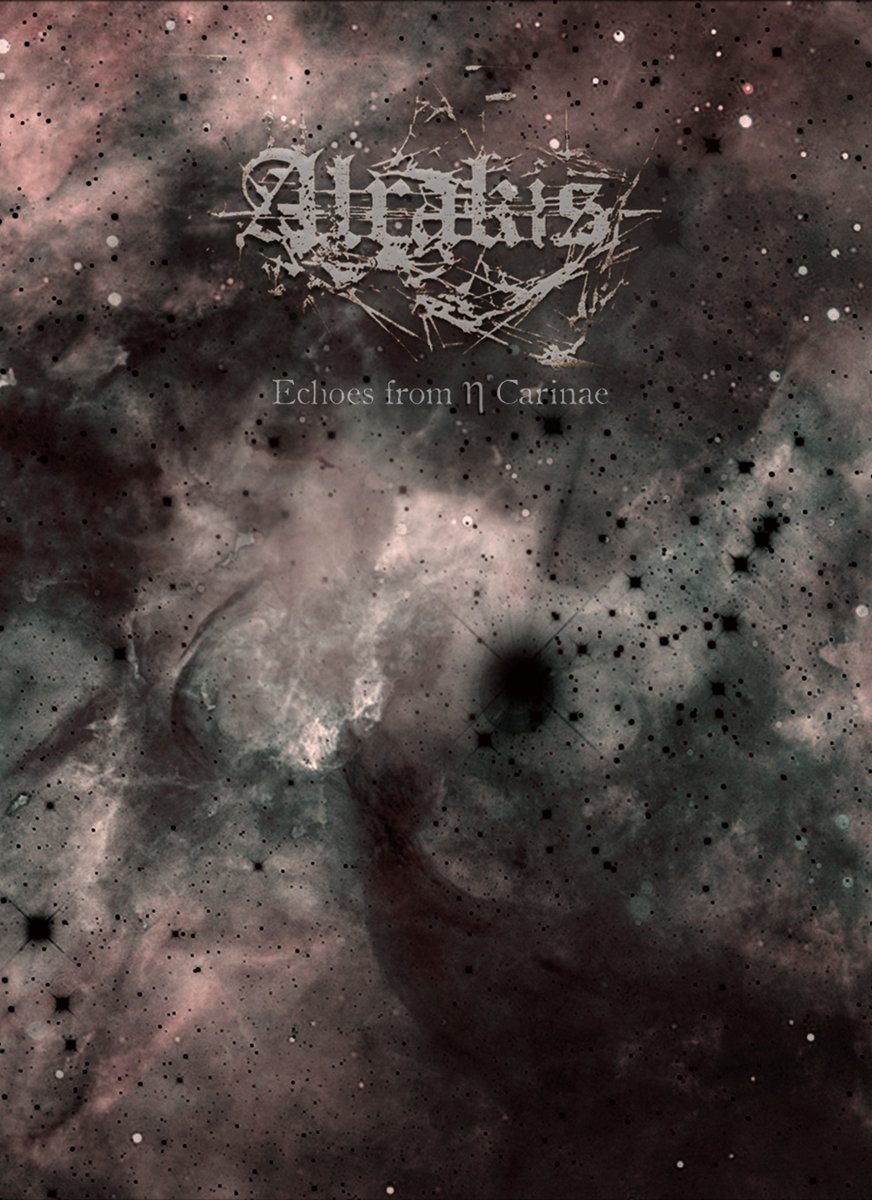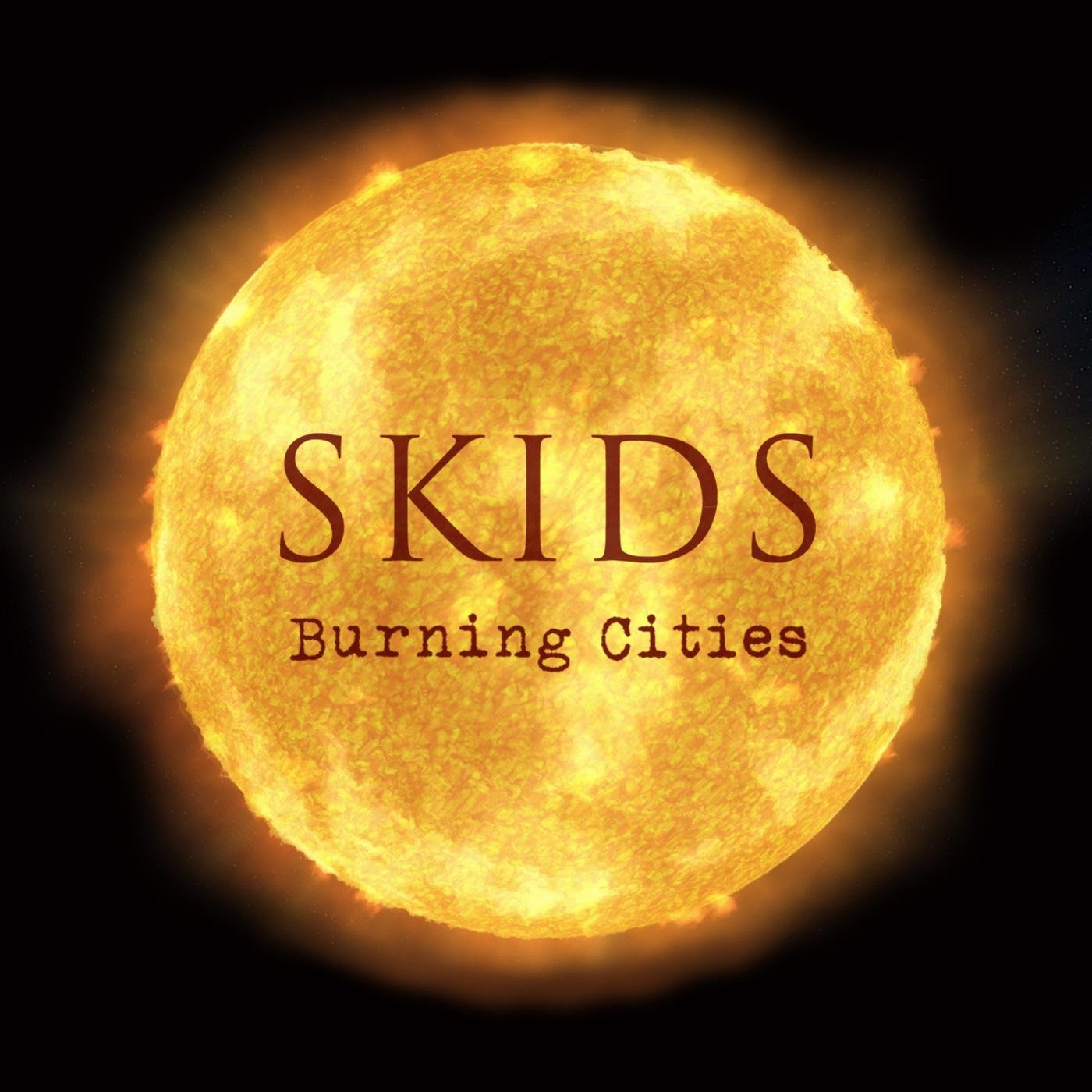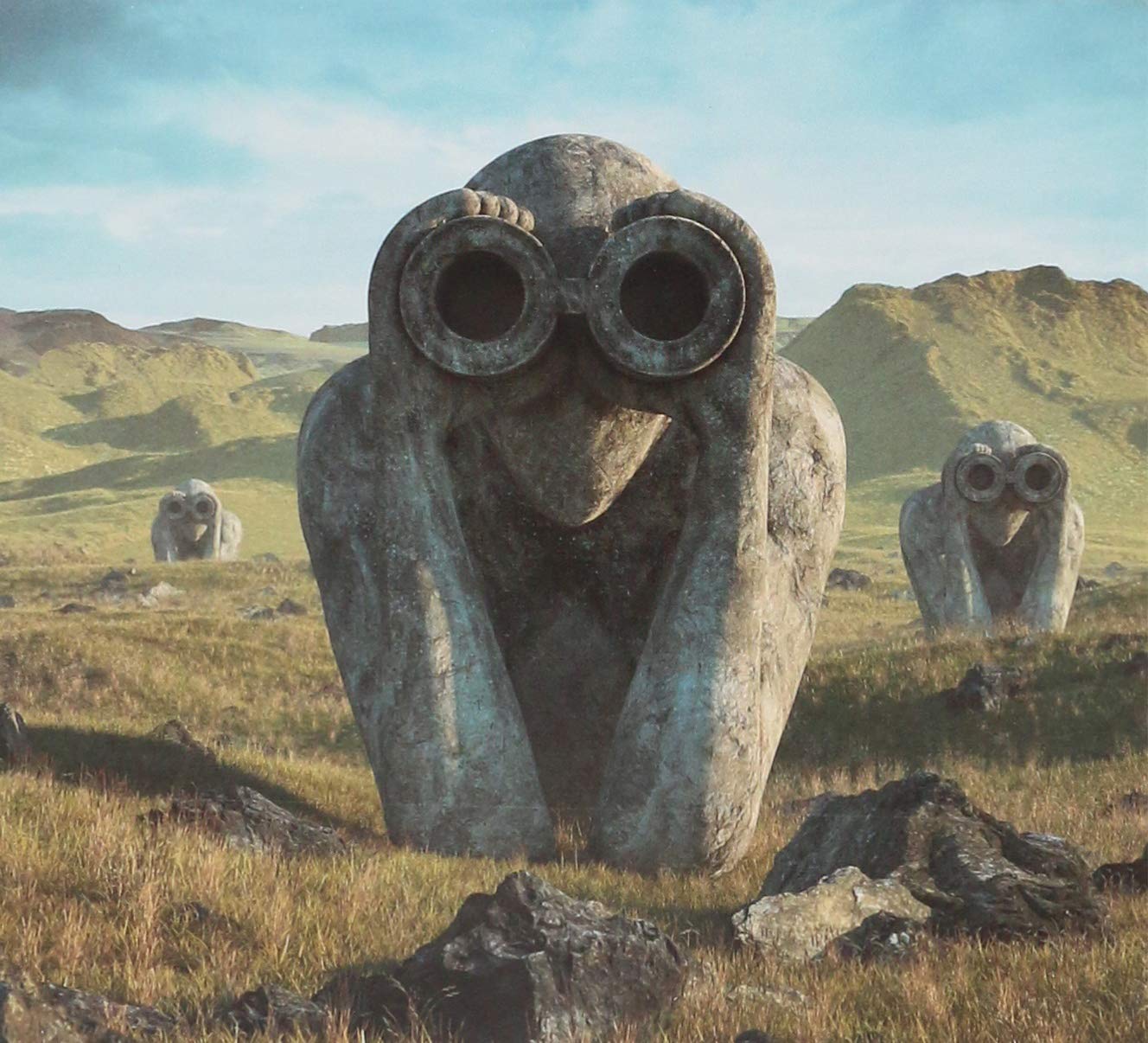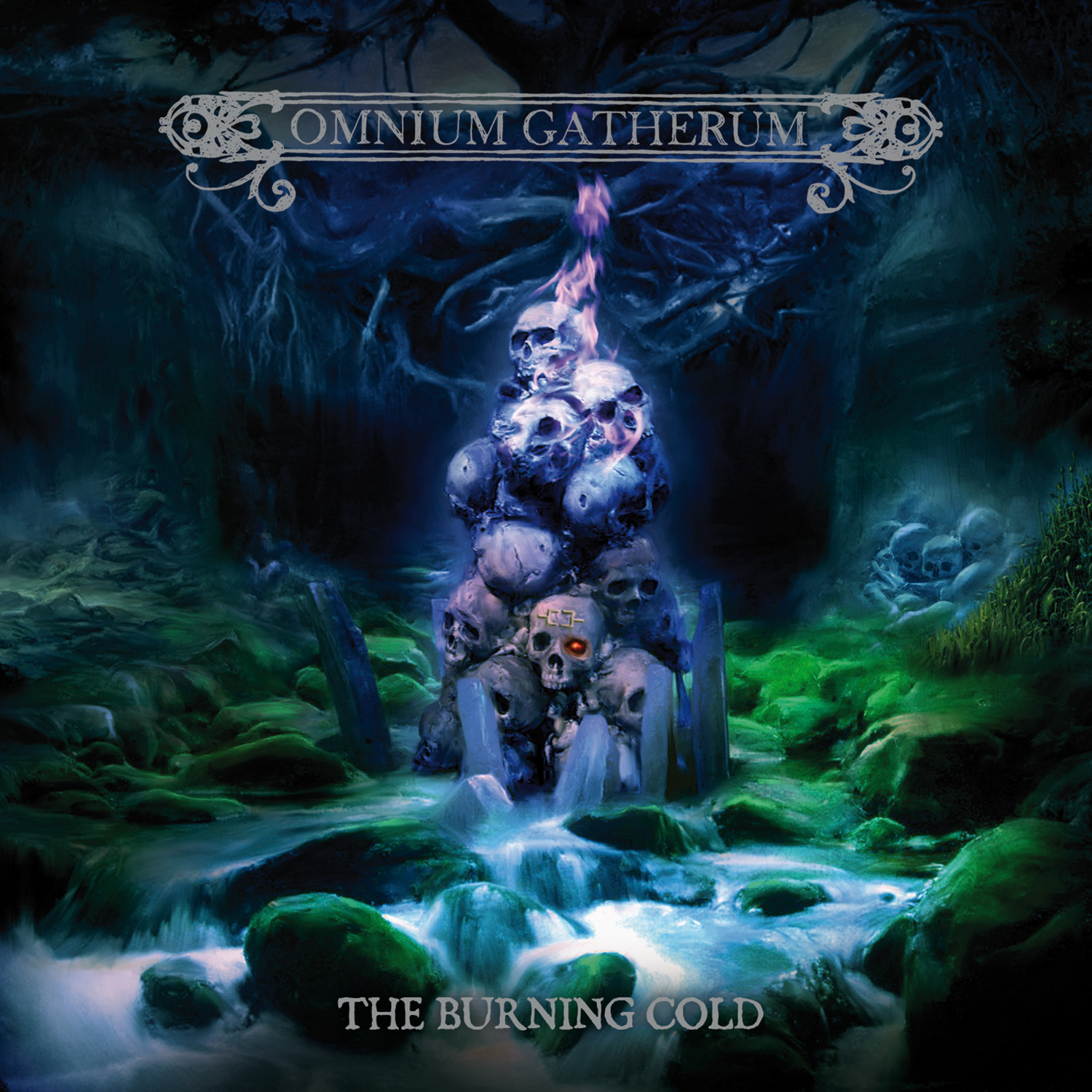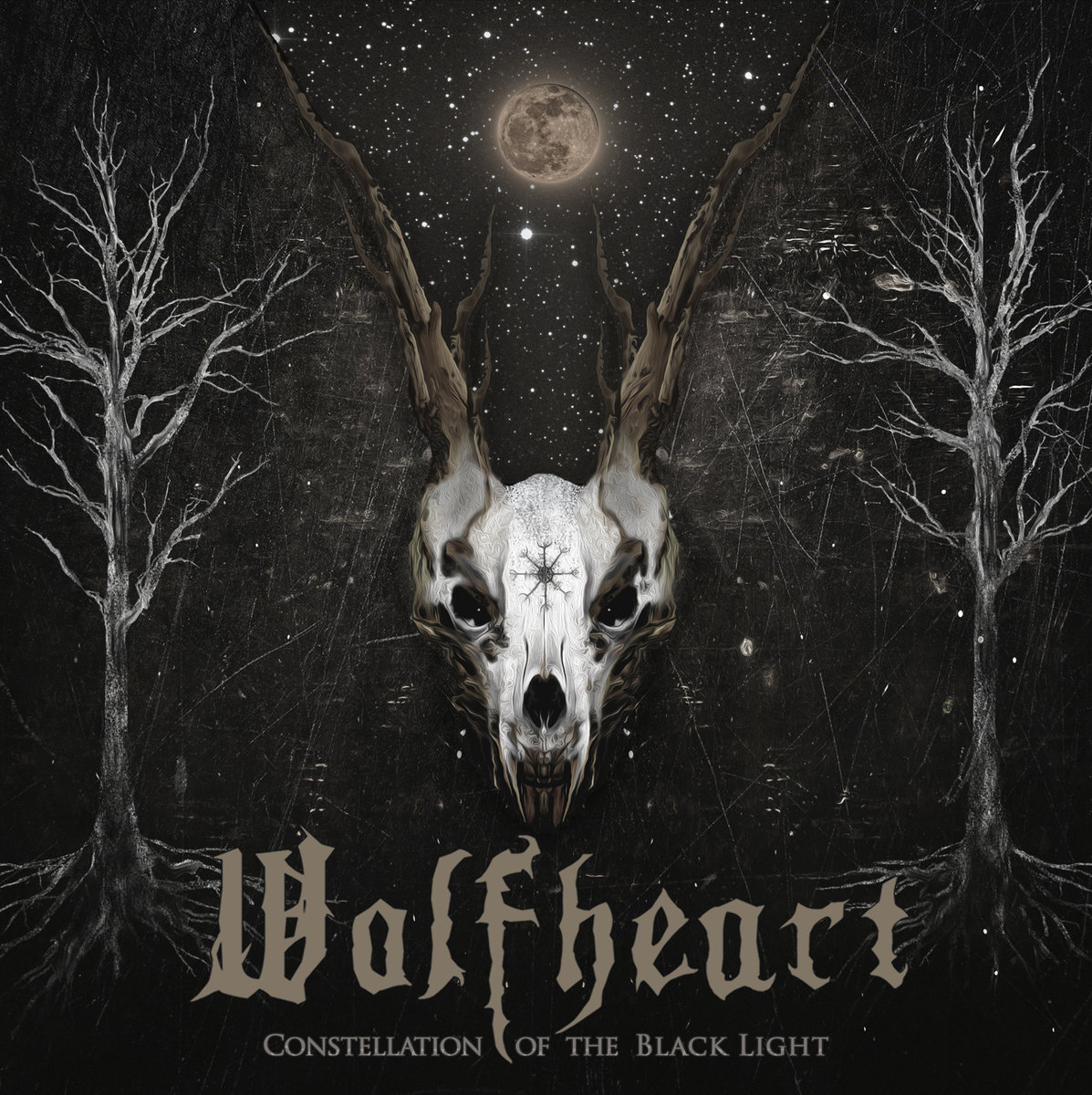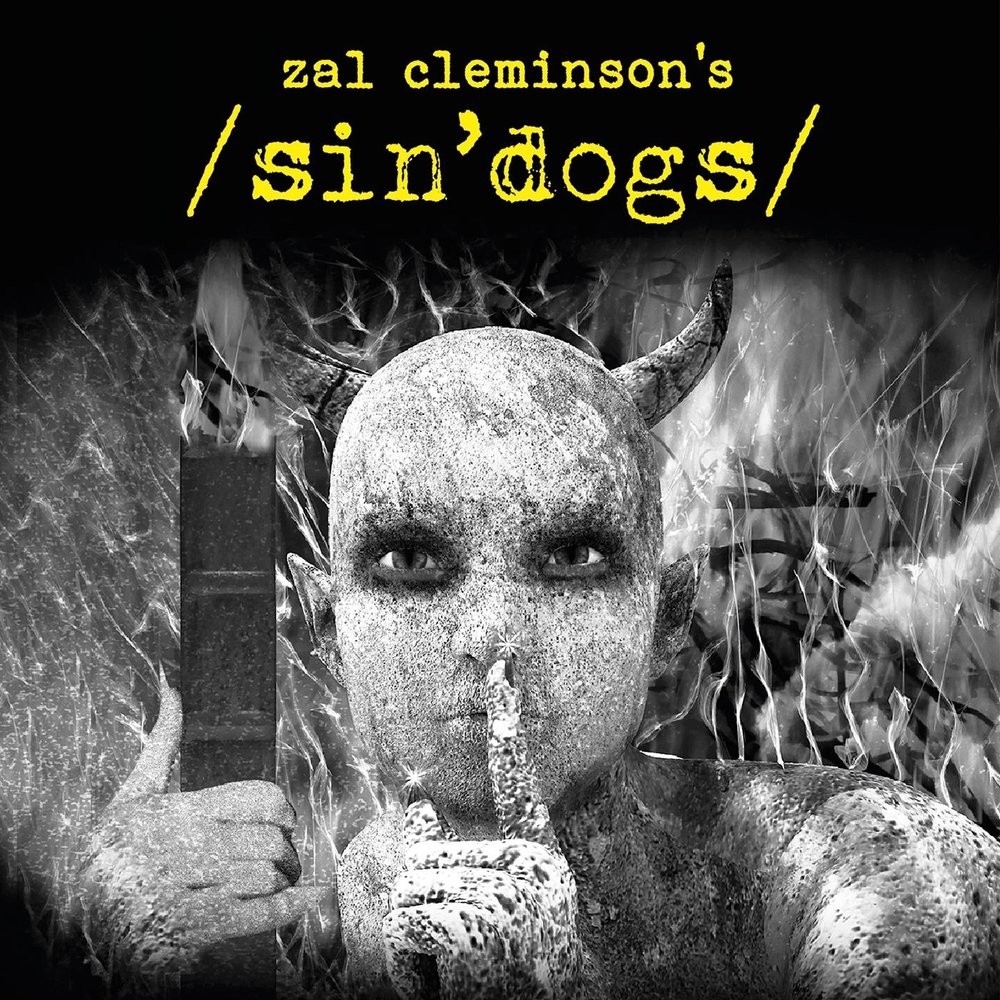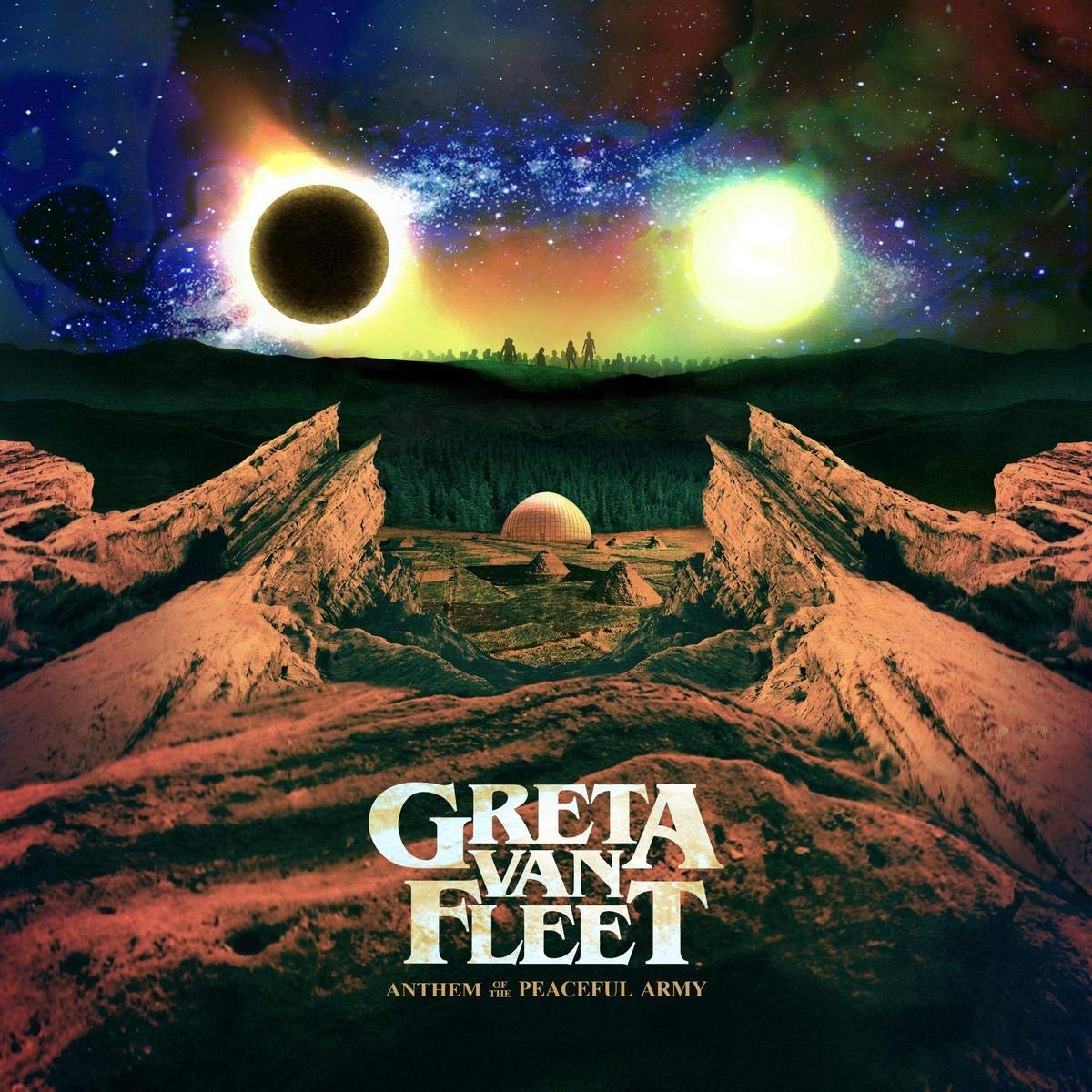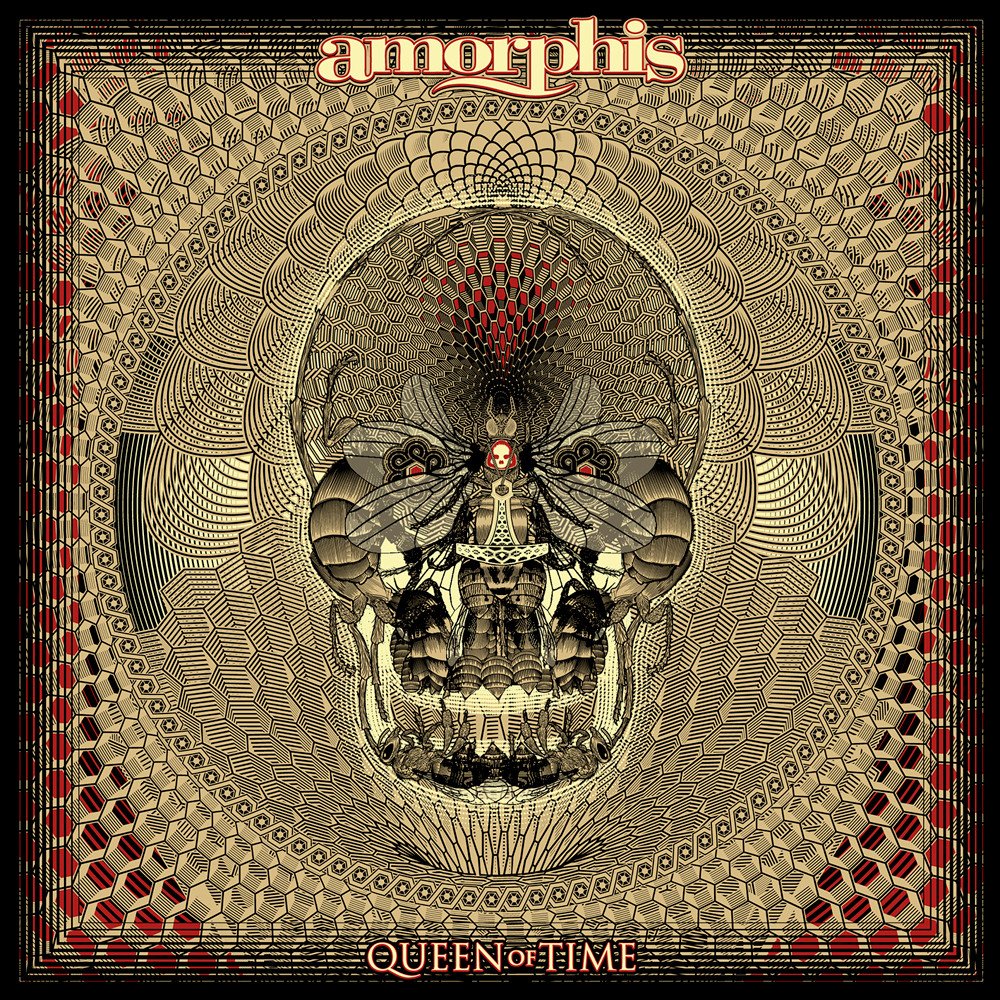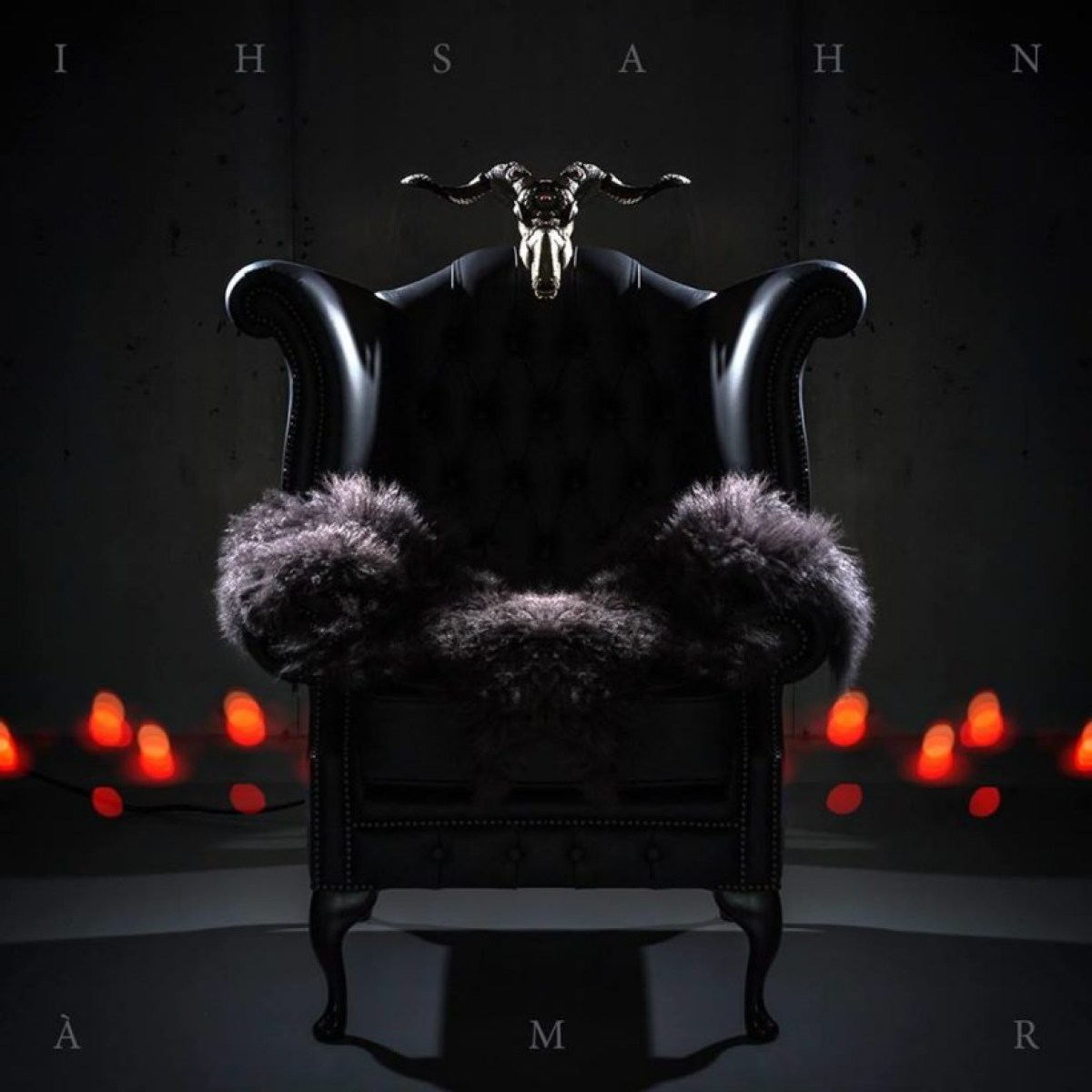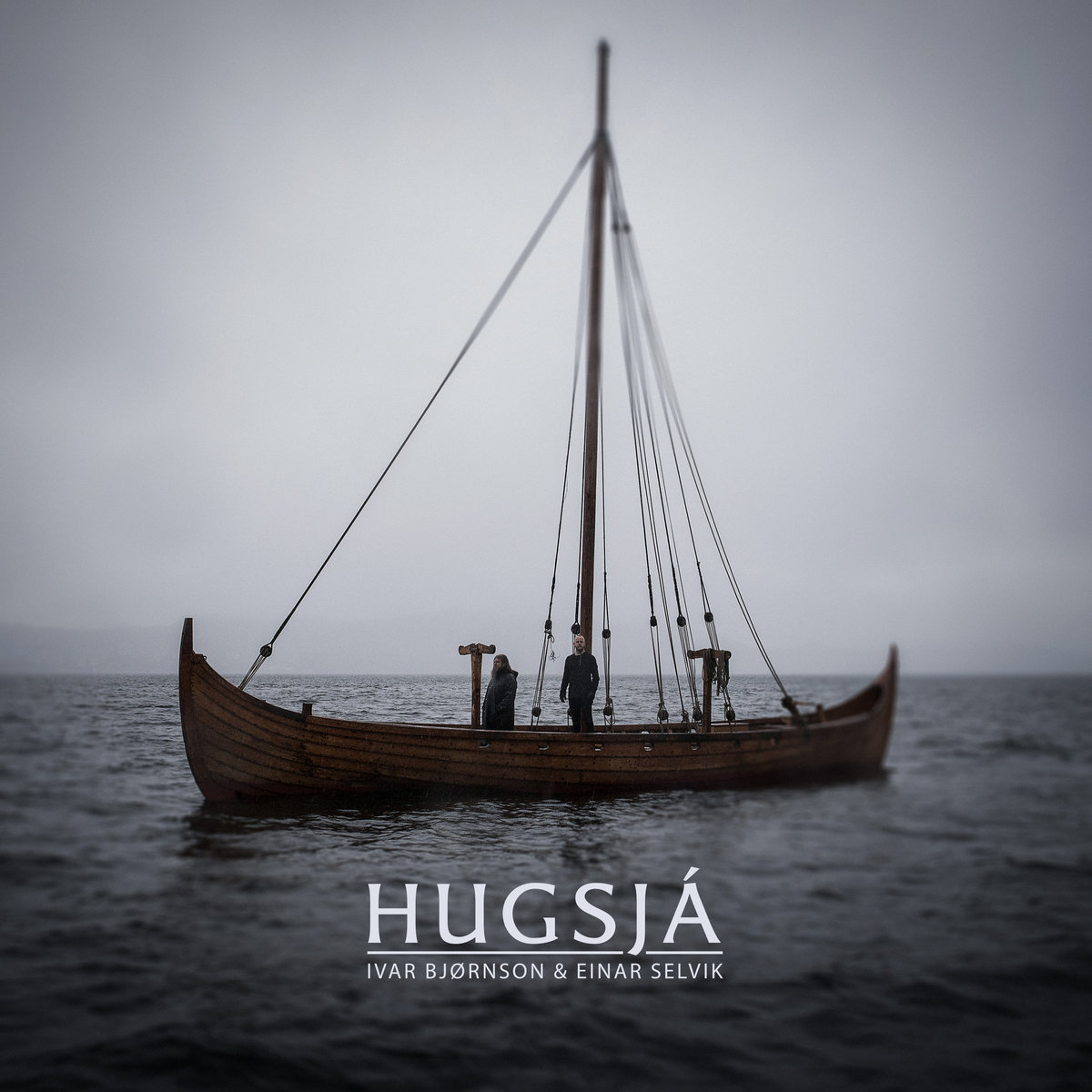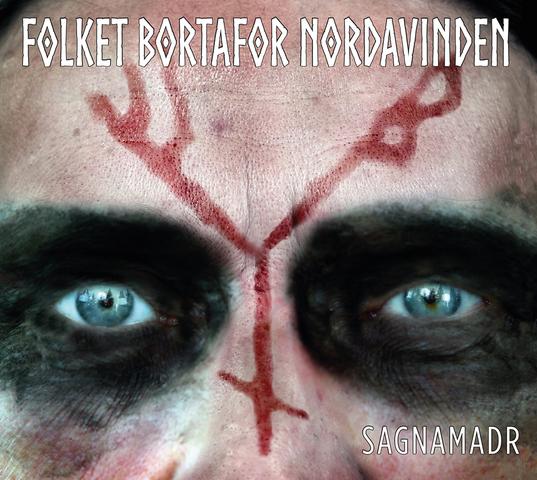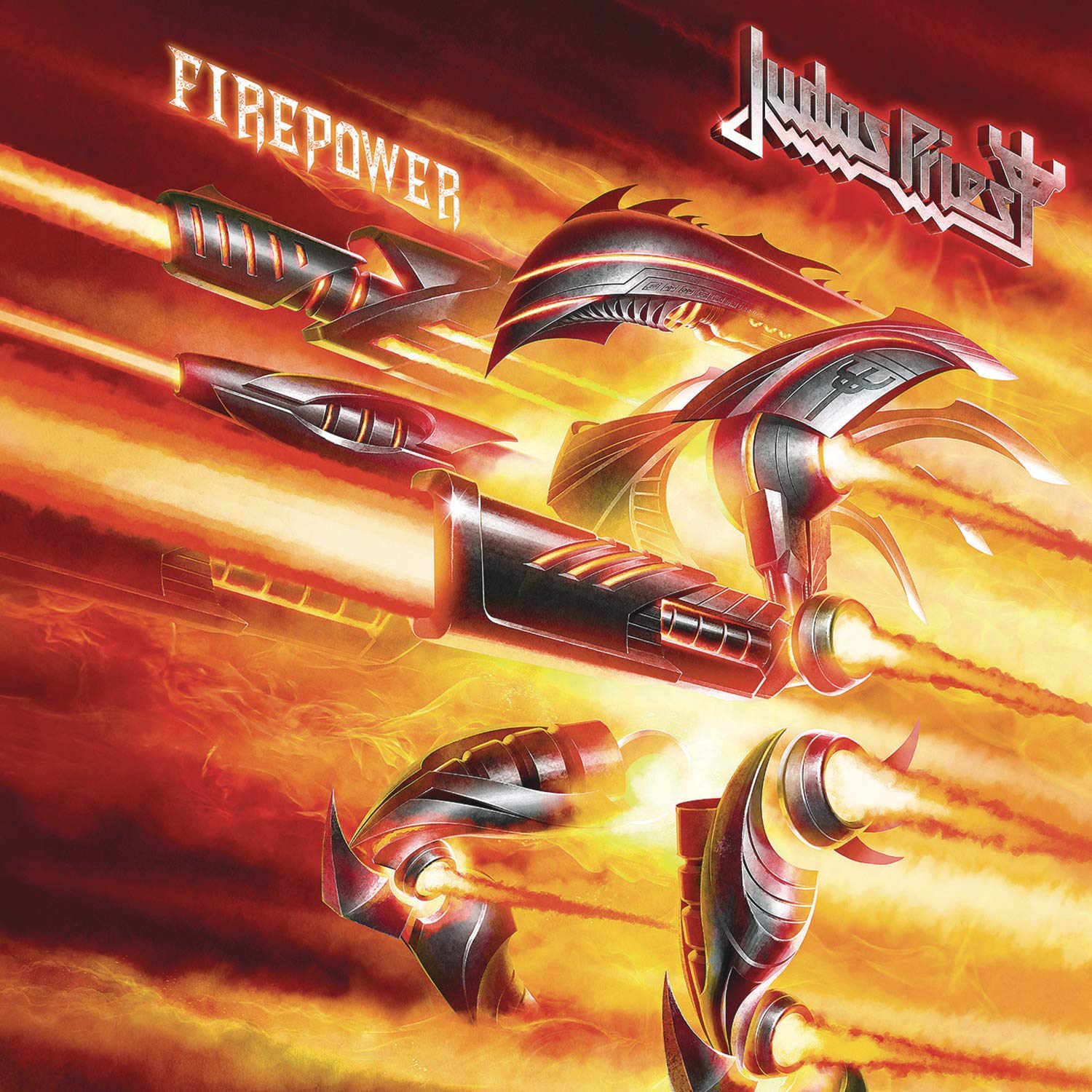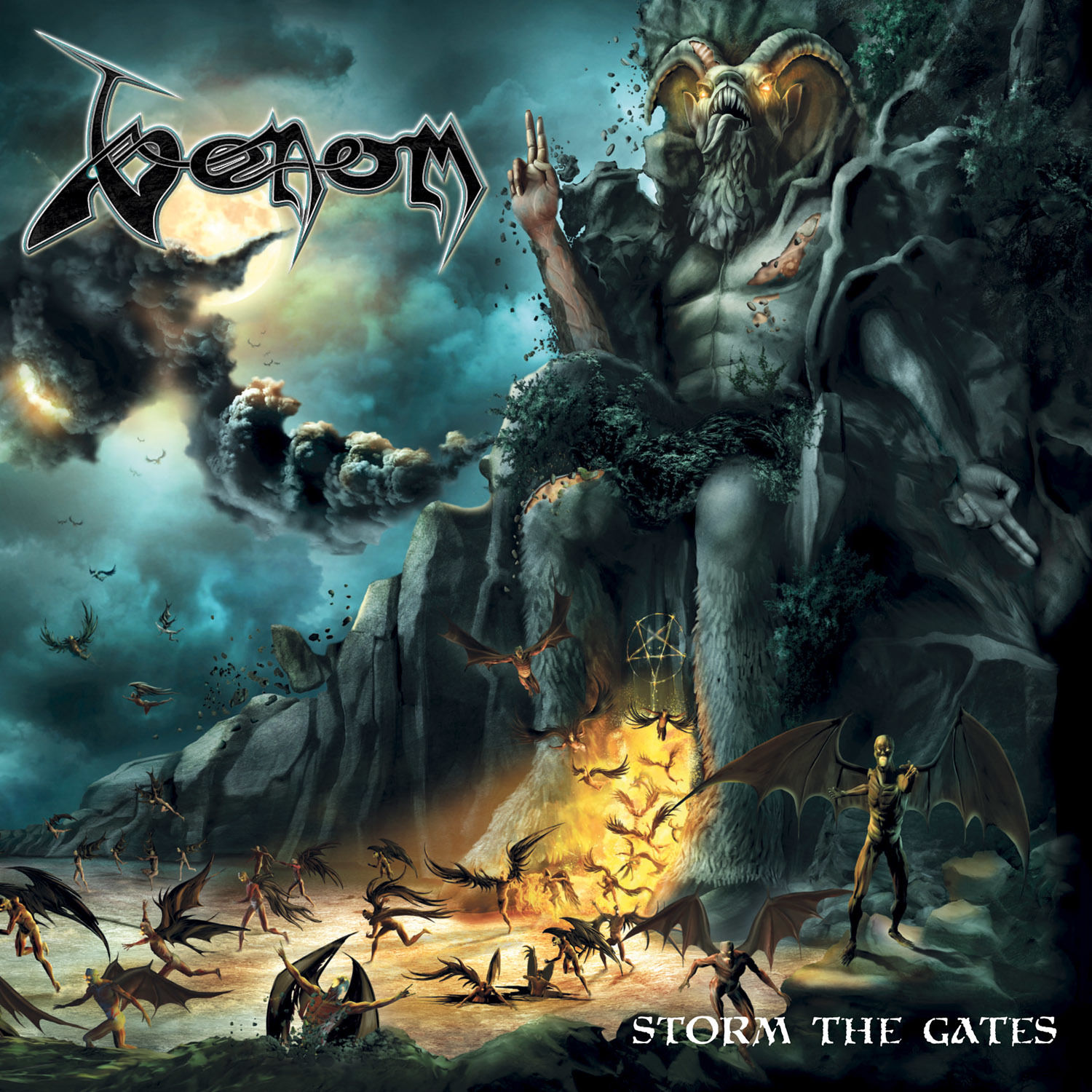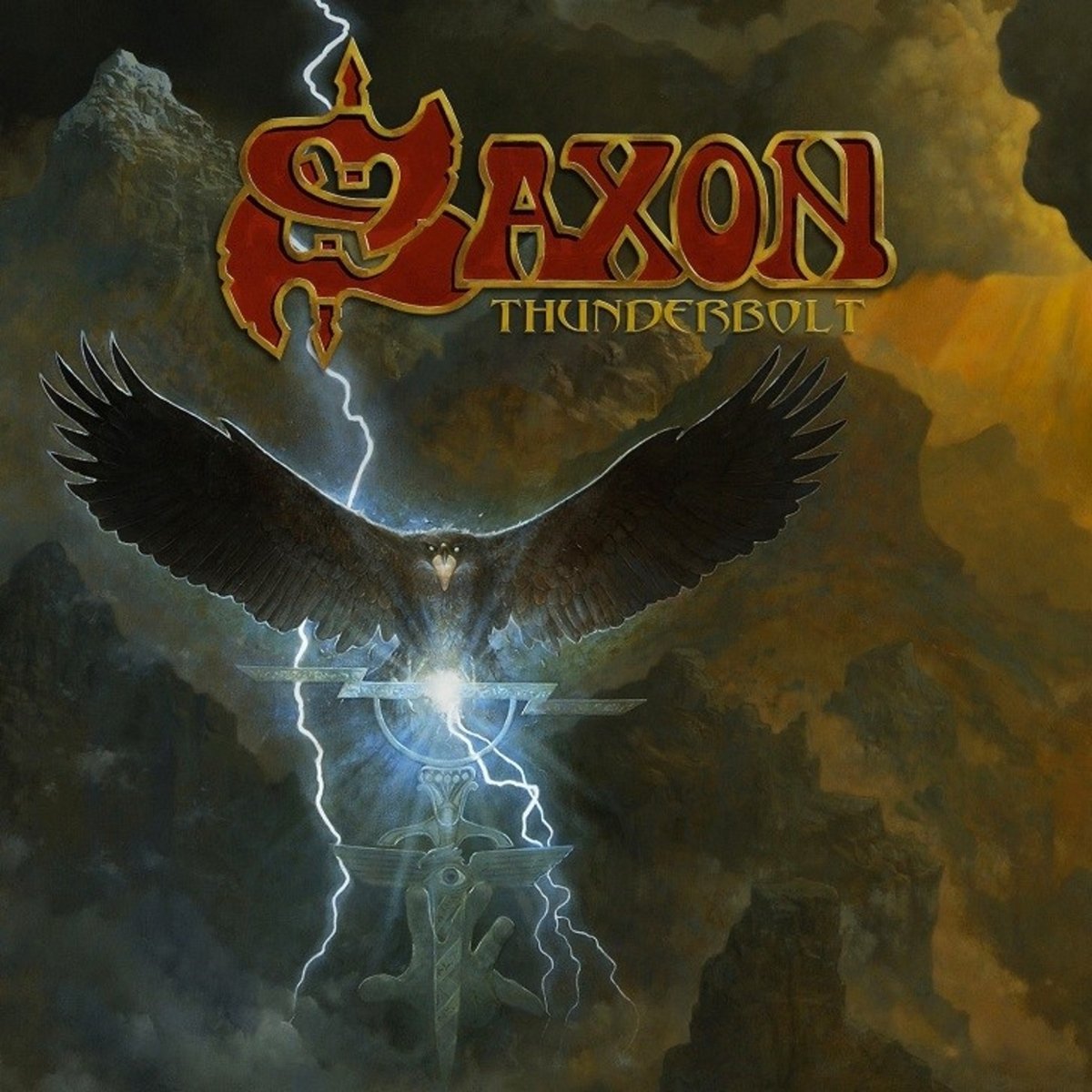My Top Albums of 2021
1= Mesarthim – Vacuum Solution
My favourite Australian band found the perfect sound in 2021. The duo’s early material blew my mind – I knew I was hearing the start of something special. Some of those early tunes, despite being musically immaculate, were held back a little by production that could have been fuller. No such issues anymore. The production on Vacuum Solution captures the vastness of the band’s sound. Captures isn’t the right verb, in fact. Expresses is a more appropriate one. These soundscapes are too vast to be captured. That’s why it’s so difficult to get the production right for a band of this scope: what do eternity, infinity and a supremely sentient consciousness roaming through space sound like? They sound like this. Vacuum Solution is up there with the Alrakis albums as the most inspired and inspiring atmospheric black metal ever created. The tracks delve into electronica too. This isn’t Mesarthim’s first time fusing ambient elements with colossal metal. It is, however, a showcase of just how good the band has become at blending the two styles. Listen to A Manipulation of Numbers and you’ll hear what I mean. It starts off like something from Jan Hammer’s soundtrack to the original Miami Vice TV series – delicate keyboards and sublime melodies. Then 49 seconds in, the music quietens, there’s a momentary lull, expectation builds, and… BOOM! A gargantuan wave of riffage explodes out of the speakers. On top of that wave, riding it like a berserk surfer, is a roar of sheer cathartic abandon. The effect on the listener (in my experience, at least) is monumental. Endorphin flood. Shivers up the spine. Body hair standing up like a legion of antennae sensing magical frequencies in the air.
Vacuum Solution is technically a 5-track EP but I’m including it in my album-of-the-year list because: (a) it’s as staggering a piece of work as any album; (b) Slayer’s Reign in Blood LP is only 28 minutes and 55 seconds long, yet that doesn’t stop people from hailing it as a classic album (Vacuum Solution clocks in at 27 minutes, 48 seconds). Listen out for tips o’ the hat to Enigma’s Sadeness in A Manipulation of Numbers – Mesarthim acknowledging their electronic influences. I like that. It’s respect. Despite this duo being very much an atmospheric black metal band, the opening riffs of Heliocentric Orbit are total melodic death metal in the Finnish vein, sounding just like Wintersun. Nothing wrong with that! The same track also features brief appearances from a plinky-plonky melody that sounds like it came out of a Fisher-Price kids’ keyboard. Reminds me of the keyboard sound on the phenomenal Nobody’s Wife by Ten Benson (one of the most underrated bands on the planet). The influences here are many and varied. I urge you to listen to this EP in lossless format: vinyl, CD or lossless digital FLAC. Lossy formats such as mp3 are, in a word, shite. They’re called lossy for a reason: they lose much of the original source material’s frequency in order to reduce file size. The result: smaller files with horrifically diminished sound. Mesarthim’s music is vast. It has to be heard it in all its lossless wonder. Turn it up loud and be wowed.

1= Deafheaven – Infinite Granite
There are some similarities between this album and the Mesarthim EP above. Both feature soundscapes that fluctuate between quiet introspective melodies and huge walls of riffage. Both delve into electronica and ambienta in pursuit of the perfect balance between heaviness and melody. Both transcend what could be referred to as “songs”, creating something so much bigger it’s transformative to hear. That’s why I use the term soundscapes to describe them. They’re vast. Deafheaven’s music is often labelled blackgaze. That’s not a bad way of summing it up – a mixture of shoegaze and black metal (the hi-fidelity, endorphin-boosting variety as opposed to the lo-fi, burn-down-churches-in-Norway brand). While Mesarthim’s vocals are roars in the abyss, Deafheaven’s singing is cleaner and more delicate than ever before. I saw one preposterous article (I won’t name and shame its writer – he’s entitled to his opinion, even if it is ludicrous) about this album. The writer in question lamented the direction Deafheaven took with Infinite Granite. He expounded at length over how the band had veered disastrously out of blackgaze territory and into shoegaze. Such a pronouncement was preposterous in so many ways, I’m not even going to get into them here. That article’s writer just doesn’t get 2021 Deafheaven. He whined and moaned about how the songs on the new album don’t get any emotional response from him. If that’s his experience he has every right to voice it. He went on, however, to declare that none of the songs on Infinite Granite would stimulate awe in any listener, as the band’s early classics did. That’s not for him to say. He can’t extrapolate his experience out to everyone; to think he can is evidence of a character disorder and/or some sort of god complex. Music is all about resonance. The new Deafheaven material may not have resonated with him but it does resonate with me. Utterly. So much so that the album’s right at the top of my 2021 list. To me, it seems weird that anyone could listen to the track Lament for Wasps and not be moved on a profound level. Sublime intro, gorgeous tones, vulnerable vocals, flawless melodies, then the escalation, the expansion into a tsunami of sound that gets into every part of me and affects me on a molecular level. I feel it happening every time. It resonates. And as I said before, it’s all about resonance. Every moment of Infinite Granite resonates perfectly with me. I consider it a masterpiece. That’s my experience.
I recommend playing this album in lossless format, turned up loud and pumped through big speakers. It just may change your life for the better.

1= Insomnium – Argent Moon
This isn’t the first time a release from Finland’s Insomnium has topped one of my album-of-the-year lists. Or the second. Or even the third. The first Insomnium LP to do so was Above the Weeping World back in 2006. That pioneering album – my equal-favourite record of all time – was a defining moment for melodic death metal. Since then, each successive Insomnium release has achieved top billing in my list for that year. Insomnium’s music resonates with me. Totally. I love this band. I’ve listened to their albums thousands of times and they never get stale. The music is mythic, dark, beautiful and wintry. It’s heavy yet always driven by melody, even in its most brutal moments. Like Mesarthim’s Vacuum Solution, Insomnium’s Argent Moon is technically an EP. Also like Vacuum Solution, Argent Moon is absolutely going on my 2021 album-of-the-year list, for the same reasons given earlier. Plus it’s my fucking list so I’ll fucking well put whatever the fuck I want on the fucking thing and if any fucker has any objections, (s)he can fuck right off. So as I was saying, I like Insomnium. Prior to the release of Argent Moon, band bassist/vocalist/founder Niilo announced that it would be an EP featuring four new tracks, all of them ballads. This fascinated me. I know what Niilo means when he says ballad. An Insomnium ballad is a long way from Every Rose Has Its Thorn and More Than Words. If you’re not familiar with Insomnium and you’re wondering what a ballad by these melodeath pioneers might be like, imagine your soul tearing itself apart in existential sorrow as you look up into the Finnish winter sky at night, feeling limitless longing while the Universe sheds Her icy tears onto your skin. That’s what an Insomnium ballad is like. There’s beauty and delicacy, poignance and heartache, but there’s also anger and catharsis, rage and roar. There is balance. Light and shade. Each of the tracks on Argent Moon is a classic in its own right. This was by far my most listened-to record of 2021. I played it relentlessly for months while working on the Metallic Dreams sequel (which is nearly finished – more on that later). Perfect atmospheric music for the soundtrack of my book. Perfect music, period.
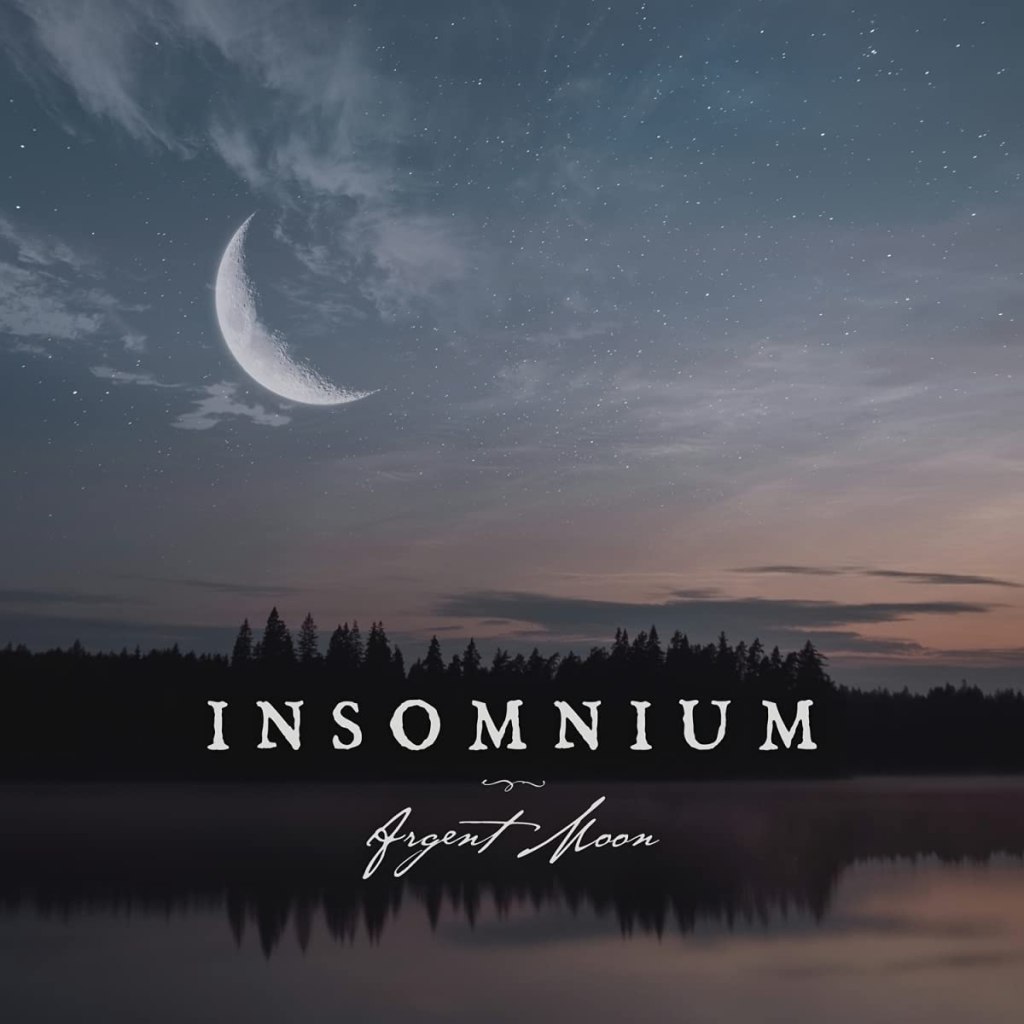
1= Wardruna – Kvitrafn
Wardruna founder Einar Selvik used to go by the name Kvitrafn in his previous band Gorgoroth. Kvitrafn means White Raven. Paradoxical, see? And as Salvador Dali pointed out, “All true art is utterly paradoxical.” This latest album from Wardruna is loaded with the highest quality of music, astonishing vocals, awe-inspiring atmospherics and real emotional depth. It’s the music of nature and the north. It talks to the listener’s soul. It resonates. There’s that word again. Wardruna’s most unique feature is my pal Lindy-Fay Hella, whose voice takes the music out of the worldly realm and into the otherworldly. While Armored Saint’s John Bush gets my vote for best male metal vocalist, Lindy-Fay gets my vote for best vocalist, period. That voice. Words can’t describe it. Just when the listener is soaking up the sounds of ancient Nordic instruments and the ritualistic chants of Einar Selvik, and thinking that a particular song is so perfect it couldn’t get any better, Lindy-Fay’s vocal arrives, elevating the whole experience sonically, emotionally and spiritually. Out of this world.

1= Adrenalin Ghosts – The Plague Fountain
The unlikely way in which I found this album proves the existence of serendipity. Here’s the story. You may already know (but if you don’t you’re about to find out) that the greatest song ever written is I Could Be So Good for You by Dennis Waterman. There are other equally good songs but none better. You can’t improve upon perfection. As you may also know (and if you don’t you’re about to find out), I Could Be So Good for You, in addition to being a hit single, was the theme tune for Minder, the best TV show of all time (rivalled only by Chorlton and the Wheelies). Minder was a full-on Watermanfest. Dennis not only composed, wrote lyrics for, performed and sang the intro and outro music for the show, he was the star in the programme too (along with the inimitable George Cole as Arthur Daley). I have the single of I Could Be So Good for You. From that I created a lossless FLAC version years ago, to listen to in the car and on my Cambridge Audio black-magic upscaling digital witchery device at home. It’s one of the songs I’ve sung to the wolfchild since he was just a wee explosion of polar-bear-white fur with enormous ears and paws (which he soon grew into). He has always loved me singing to him, and I Could Be So Good for You is the song he enjoys most (along with Uncle Elijah by Black Oak Arkansas). So when I couldn’t find my FLAC version of the Waterman standard, a sort of panic set in. (I lost a lossless file – there’s surely some sort of irony in that.) I could have created a new FLAC from source, but I figured it would be quicker to find a lossless version online. No such thing exists, though. A shitey mp3 download was available from Amazon but I had no interest in that. It had to be the real thing with the full sound. Figuring Dennis might have a bandcamp page, I Googled “Dennis Waterman bandcamp” only to find that he’s not on there. Google did deliver an intriguing search result, though: a link to the page of Adrenalin Ghosts, a musical project I’d never heard of before. Why was that page presented as the answer to my query? Because the band’s bio says the following: Adrenalin Ghosts is a mostly solo project of Si Egan, who plays everything, and does the artwork. Like Dennis Waterman without the singing or acting. As soon as I saw that, I knew that serendipity was at work. I clicked on the link, which took me to a page featuring the most recent Adrenalin Ghosts album, The Plague Fountain. Even before sampling the sounds, I was captivated by the album’s front cover. It has the same haunting quality as the cover art of Iron Maiden’s debut LP. There’s no Eddie the Head with his spiky hair, wide eyes and cadaverous menace, but there doesn’t need to be. The atmosphere in The Plague Fountain‘s cover is just as surreal, its nocturnal scene like a vision from a dream. Instead of Eddie’s eerie eyes staring out, it’s an old Volvo estate car with the headlights on. Like the debut Maiden cover, there’s mist, lamppost streetlights, a bus stop, a bin and some mysterious-looking flats. (I often see or hear connections even when they weren’t consciously created. That’s the way my mind works. You wouldn’t believe how many times I’ve been listening to someone ramble on about some random topic or other, and I’ve blurted out, “That reminds me of a Blue Öyster Cult lyric!” Then I’ve proceeded to recite the lyric and explain the link between it and whatever the individual in question had just been talking about. Sometimes this blows the person’s mind. Other folk stare back startled, like I’ve just swooped in from some alien planet and imparted information in a language they don’t understand.) Anyway, back to Adrenalin Ghosts. The music is the product of genius. So much subtlety, such an innate understanding of layers and dynamics and repeating leitmotifs in order to bring about an altered state in the listener. As I sampled the tracks on The Plague Fountain, each one felt familiar. Even though my ears and brain had never experienced these tunes before, my soul knew this music. And when I played Trevelyan’s Rocker for the first time, it was like meeting a best friend I hadn’t seen in forever. I knew every nuance of the tune. And it knew me. So I bought the entire Adrenalin Ghosts discography. The Plague Fountain album in lossless format – upscaled through my Cambridge Audio black-magic machine and pumped out by huge speakers – is a monumental sound. Every time I hear Trevelyan’s Rocker my soul feels at home. The hypnotic tones of Labyrinth Music bring on an ultra-relaxed state, their leitmotif like a ghost that gets into the listener and, when it leaves, is missed. The Six Tasks of the I Ching is sonic bliss. Immaculate melodies, gorgeous layering – restrained and minimalist yet weirdly cathartic. Title track The Plague Fountain sounds like classic ’60s/’70s prog with a funky bass line and some Deep Purplesque keyboards. If this song were tagged onto a remaster by Focus or Van der Graaf Generator and listed as a “previously unreleased session track” not a single fan would disbelieve it. It’s that accomplished. I could go on and on about this album but I’ve said enough. It resonates with me. Each track evokes a cascade of emotions, so much so it’s like sorcery. There being no vocals doesn’t take anything away from the tunes. They’re all the more evocative because they don’t feature vocals. Singing would ruin these soundscapes. They’re perfect as they are.
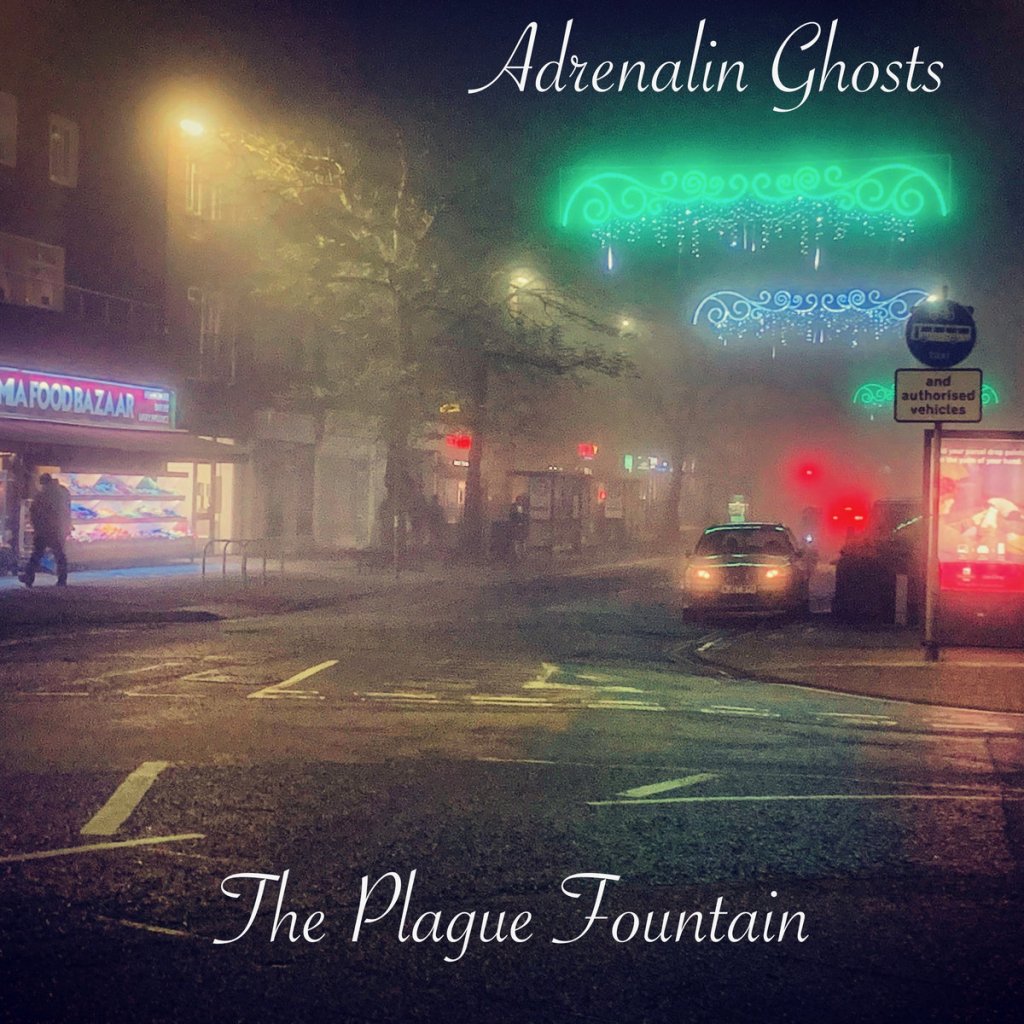
1= Ministry – Moral Hygiene
Angriest album of 2021 by a country mile. As always, Al Jourgensen’s lyrics are incisive, observant and wholly unwilling to tolerate the hypocrisy and deception perpetrated by so-called government, corrupt corporations and their shill lackeys in the mainstream media. If everyone were as outspoken and savvy as Al (and I wish that were the case) the world would be in a much better state. No one would listen to “politicians” or other such deceitful, manipulative cunts. There are sociopaths out there getting away with murder on a vast scale. They have committed – and continue to commit – crimes against humanity. For that they will be held accountable. They’re in the medical-pharmaceutical complex, “governments” (a joke of a term) and the so-called World Health Organisation (the most inaccurately titled collective in history), assisted by their puppets in the media (who peddle whatever propaganda and lies their corporate funders pay them to disseminate). If you’re not fearlessly outspoken against all of that, you’re part of the problem.
To the music, though. It’s my favourite Ministry album. What does that mean? Well, Psalm 69: The Way to Succeed and the Way to Suck Eggs blew my mind when it first came out. Still does. It’s a cerebral, articulated venting of focused rage. Even the gibberish of Jesus Built My Hotrod – on which Butthole Surfers frontman Gibby Haynes delivers one of the most berserko vocal deliveries of all time – makes perfect sense within the context of that album. It might be thematic and lyrical light relief compared with the more serious anti-religion moments on the record, but musically it has the same energy: it’s a geyser of boiling fury. Moral Hygiene has even more anger… and with good reason. It’s heartening to see and hear that someone has his eyes open and his mind unpolluted by the pathetic political pantomime that has been playing out for years, culminating in the current deranged situation in which megalomaniacal psychopathic morons are trying with all their (feeble) might to control the thought processes and behaviour of the masses, proposing the permanent stripping away of individual freedoms because “it’s in the best interests of everyone”. Which it isn’t, of course. It’s in the financial interests of a few manipulative little cretins but in the absolute worst interests of everyone else. The pollution of people’s minds and bodies is going to come to an end and the perpetrators will be held accountable. That is already underway. The truth they’ve desperately tried to hide is known by many. More people are becoming aware of it every day. I’m still troubled that so many people were/are so easily duped. Critical-thinking faculties are in short supply. Kids should be taught – as I was – to question everything. They should know that “authority” is a mere illusion pushed by those who seek to manipulate. Understand that and you will always be free. You’ll perceive things as they actually are. You’ll see through every Emperor’s New Clothes lie. You’ll be a beacon of truth. Speaking of truth, Al dishes out ten servings of it on Moral Hygiene. There are musical tips o’ the hat – I’m not sure if they’re conscious or inadvertent – to some other legendary sonic innovators. Opener Alert Level kicks off with a rhythm reminiscent of White Zombie’s More Human Than Human, followed by a guitar riff that’s a variation of Black Sabbath’s Black Sabbath – a tune that scared the shit out of millions through effective use of the tritone: that three-part melody which the church tried to ban centuries ago because they believed that it could usher in the Devil. Back then churchgoers named the tritone “Diabolus in musica” – the Devil in music – having witnessed its ability to stir up a sense of unease and fear in those who heard it. (In an inspired move, Slayer chose Diabolus in Musica as a title for one of their albums.) This new Ministry album starts as it means to continue, with more fury than even the angriest Slayer record. Listen to the unrestrained rage in Al’s voice as he roars the opening line, “The cards are on the table, the hands are on deck, heading to a future we all reject.” Staggering. Track three on Moral Hygiene – a furious ditty called Sabotage Is Sex – starts out like a speedier version of Testament’s Low (nothing bad about that!). Further on in the song, starting at 2:24, a new backing melody comes in, sounding a lot like the opening rhythm of Amorphis’s Towards and Against. Could be deliberate tips o’ the hat to Testament and Amorphis, or subconscious tributes to them, or maybe just accidental soundalike moments. Moral Hygiene contains one cover version, included because it fits perfectly with the album’s theme: it’s Search and Destroy, originally by Iggy and The Stooges. Every song on this album is loaded with fury. The track titles speak volumes, among them: Disinformation; Broken System; We Shall Resist; Death Toll. This is a visceral non-fiction antithesis of the lies and nonsense pushed by politicians, their corporate masters and the shill lackeys in the media. It’s the sound of an avenging angel roaring in righteous rage. And it is fucking glorious.

1= NEGURĂ BUNGET – Zău
The swan song of my favourite Romanian band. Zău is testament to the creativity and innovation of band drummer/founder Gabriel “Negru” Mafa, who died in 2021 aged just 42. It’s a sonically complex beast. The album uses a wide range of sounds to build a truly original atmosphere. Spacey keyboard tones, pan pipes, arboreal sounds, wind, haunting whispered male voices and hypnotic female chants combine to astonishing effect. Opener Brad is one of the most epic pieces of music ever composed – 15 minutes and 53 seconds of utter atmospheric perfection. It begins with mesmerising ambience – the soundtrack to wintry woods at night – as a layer of keyboard and a whisper invite the listener in deeper. Then, halfway through the piece, when the listener is in too deep to escape, the mother of all riffs arrives like a bolt from the blue; this wall of black-metal riffage changes the whole dynamic from relaxation to awe. Later, the piece returns to ambience before once again delivering dark riffs of immense magnitude. The rest of the record continues in this vein – sublime ambience and heavy atmospherics in perfect balance, complementing each other but never competing. I can sum up this musical balance in three words: Zău is Zen.
The band was always inspired by nature, particularly that of their home region. This comes through in the music. Even the band name reflects it. “NEGURĂ BUNGET” is derived from ancient Romanian for “dark misty forest”. There’s no better name for a metal band. As well as being NEGURĂ BUNGET’s final release, Zău completes the Transylvanian Trilogy, which started with Tău and continued with Zi. This is the music of nature, winter and eternity. At points it actually transcends music and becomes something else – a primal sonic force. The use of traditional Romanian instruments recorded in an echo-heavy environment (some parts sound like they were performed in an echo chamber) is used to amazing effect on the intros and/or outros of several tracks. I could write all day about this album, then keep writing about it all night. There’s so much in it. Zău is so authentic, so deep, so rich in resonant soundscapes, so laden with mystery and emotional impact, it deserves to be hailed as one of the greatest albums ever recorded.

2= Autumn Nostalgie – Ataraxia
Innovative atmospheric black metal from Slovakia. Ataraxia is Autumn Nostalgie’s second album. The first – Esse Est Percipi – released in 2020, would have placed joint #1 at the top of my album list for that year if only I’d heard it that year. I didn’t come across Autumn Nostalgie until 2021, though. If I start retrospectively editing my albums-of-the-year lists whenever I discover new (to me) records, that would become a full-time job. So my posted album lists stay as they are, but in my mind Esse Est Percipi is right up there with Armored Saint’s Punching the Sky as the best album of 2020. Successor Ataraxia is a phenomenal album too. The ultra-fast sweep-picked cold-echo-in-the-void guitar work that characterises atmospheric black metal is present in force. There’s also a healthy amount of down-tuned rhythm riffage and bottom-heavy bass that the listener feels in the guts as much as in the mind. Light interludes are used to excellent effect. The album is sublimely delicate in parts, featuring dreamlike keyboard layers and some of the most beautiful guitar intro/outro melodies I’ve ever heard.

2= Mesarthim – CLG J02182–05102
When a band named after a binary star system in the constellation of Aries releases an album named after a galaxy cluster whose behaviour is baffling astronomers and physicists alike, it’s a safe bet that the results will be cosmic. CLG J02182–05102 is exactly that. The album features wholly different material from the Vacuum Solution EP released earlier the same year (although the LP does include a sequel to one of the EP tracks – A Manipulation of Numbers Part 2 (Vacuum Decay) is, unsurprisingly, the follow-up to A Manipulation of Numbers). This album is loaded with quintessential Mesarthim soundscapes: immersive, vast, profound, entrancing. The only reason CLG J02182–05102 isn’t joint #1 on my 2021 list is because the opening vocals in A Manipulation of Numbers Part 2 (Vacuum Decay) sound like Elmo from Sesame Street having a go at singing black metal. The familiar raw roar returns soon enough but the opening section of that track would have been far better sung in the usual Mesarthim way or delivered as a spoken-word section – a technique that can work extremely well with atmospheric black metal. The Elmo Incident is a minor blip on an album that’s otherwise immaculate. Electronica influences are present in abundance, blending perfectly with the heaviness and adding an extra dimension to the sound. In the case of instrumental Nucleation Seed, heavy elements are abandoned altogether, leaving just layers of electronica that could fit seamlessly onto a Jean-Michel Jarre album.
A deep, dark, awe-inducing album. Like everything these innovative Aussies have ever recorded, it’s essential listening.
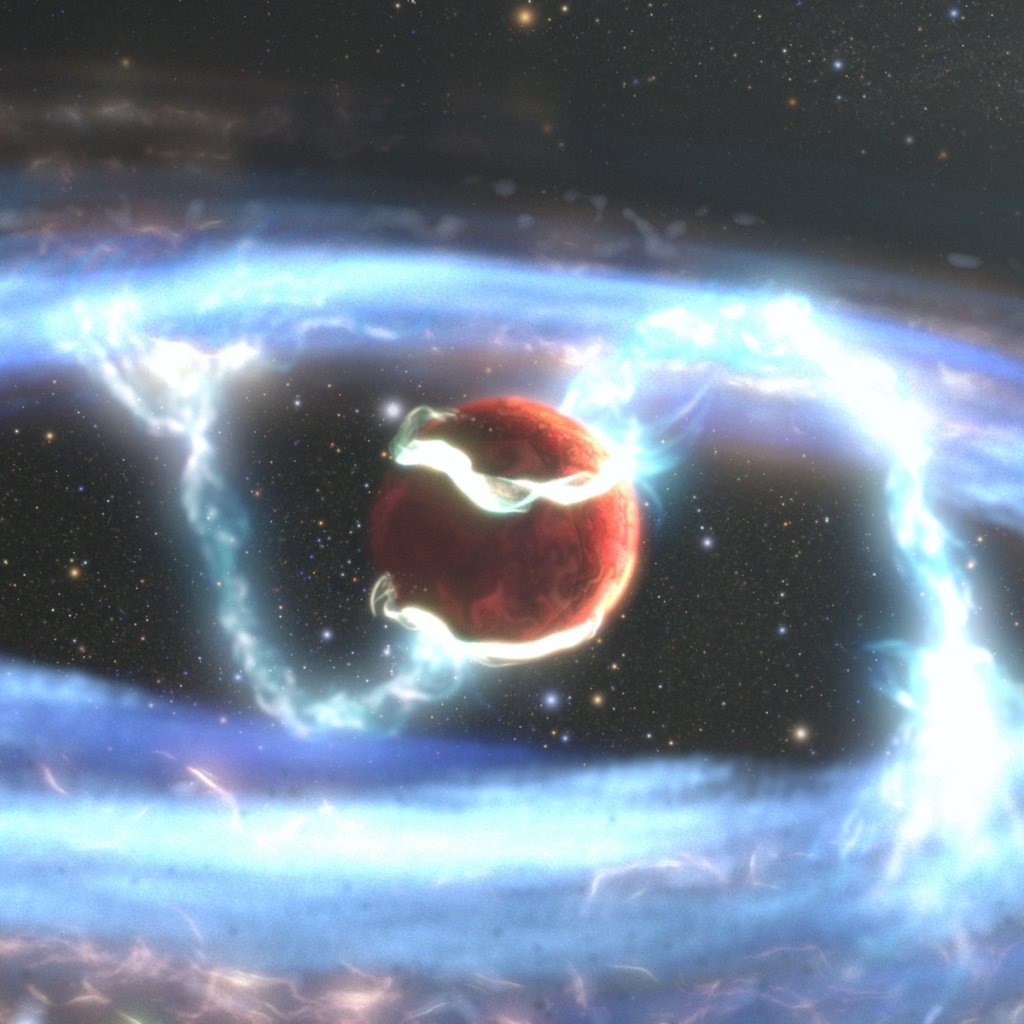
3= Sundrowned – Become Ethereal
Atmospheric black metal again, this time from Sweden. Sundrowned’s Become Ethereal is the sonic equivalent of a cool breeze on a blazing summer day. To paraphrase a certain beer manufacturer, this music refreshes the parts (most) other atmospheric black metal can’t reach. Cracking band name. Phenomenal album cover. And, crucially, music with substance, texture and depth. I love it.

3= Lindy-Fay Hella & Dei Farne – Hildring
That Hella girl again. And that voice. There’s no way of summing up Hildring just by throwing a category at it. Yes, it’s folky but there’s more to it than that. Yes, the music digs deep into Lindy-Fay’s Nordic and Sami roots, yet there’s more to it than that. At points, her voice gets into the listener’s soul and cleans it out from the inside, revitalising and renewing. A heady experience. Sonic magic. The good stuff.
Backing band Dei Farne shouldn’t go without mention. Their music brings a unique energy and atmosphere through a form of electronica that sounds simultaneously current, futuristic and ancient. That doesn’t happen by accident. There’s serious talent on display here.
Hildring means mirage. That’s a perfect name for this record. The music and vocals are evocative and at times otherworldly, the images they conjure up in the mind very much altered-state dreamscapes.
One thing that amazes me about this album is how different it sounds to Lindy-Fay’s solo album Seafarer and her iconic body of work with Wardruna. Some of the same thematic elements are there – nature, mythology, ancestry – but the music here has a sound all of its own. A unique collaboration.

4. Mr Bungle – The Night They Came Home
All the previous Mr Bungle albums are worth owning and listening to, as is any music that features Mike Patton. One thing those records have in common: each contains a couple of absolute classic tracks and a bunch of odd experimental noisemongery that’s at best tolerable and at worst annoying. Yet I always grab Mr Bungle albums as soon as they come out, just as I do with music from Patton’s other projects, of which there are many (Faith No More and Tomahawk, most notably). For me, The Night They Came Home was the biggest musical surprise of the year. I don’t perceive it as a truly immaculate album worthy of joint #1 at the top of this list, but it isn’t a kick in the baws away from it. The opening track Won’t You Be My Neighbor? sees Patton in lounge-lizard crooner mode (just as he was in Faith No More’s cover of The Commodores’ Easy), but unlike in Easy, Patton switches into a full-on rage and takes the song in a whole different direction. After that, the album is loaded with ridiculously heavy riffage, low-end bass, blast-beat drumming, and Patton’s voice(s), as always, set to impress. There’s none of the clownfoolery of the past – no snippets from porn films, no carnival music (although there is a bit of death-metal mariachi), nobody wailing on brass instruments and annoying my ears with that horrific sound. This album is all about songs. Riff verse chorus riff verse chorus widdly guitar solo chorus outro riffage stop. That sort of song. No fannying around. They just get the job done. And holy fuck, they do it in style.

5. Greta Van Fleet – The Battle at Garden’s Gate
Their debut LP Anthem of the Peaceful Army placed equal top in my 2018 album-of-the-year list. To the critics who complain that GVF’s music sounds like Led Zeppelin, I’ll say this: do you eejits think Led Zeppelin invented the sounds on their albums? Newsflash – they didn’t! Led Zep pilfered in the most flagrant way, nicking big chunks of blues songs, sometimes whole songs. They even stole lyrics in their entirety from journeyman blues artists. You don’t think Robert Plant came up with that lemon-squeezing stuff by himself, do you? Most of LZ’s The Lemon Song is a plagiarised Killing Floor by Howlin’ Wolf, then towards the end of the track Plant chucks in a bunch of lyrics nicked from Robert Johnson’s Traveling Riverside Blues. And Robert Johnson got those lyrics by stealing them! From Joe Williams, who in 1929 sang about an unspecified someone squeezing his lemon and causing the juice to run down his leg, in his track I Want It Awful Bad. (Joe must have enjoyed having his lemon squeezed, for not only was he moved to write a song about the experience, the lyrics express a desire for more of the same. That song could even be interpreted as a recruitment campaign for lemon squeezers.) So Zep’s The Lemon Song features multiple layers of thievery, yet the band had the audacity to claim all writing credits for the music and the lyrics. Until Howlin’ Wolf’s record company sued them, that is. Zep settled out of court and revised the songwriting credit so that it acknowledged Chester Burnett – aka Howlin’ Wolf – as the song’s creator. And that’s just one example of Led Zep’s magpie behaviour. They also nicked lyrics and music from a host of other musicians, many of them relatively obscure in commercial terms (and therefore safer to pilfer from – less chance of litigation in response). I love most of Led Zeppelin’s music. Although they were undeniably thieves, they were able to use stolen ideas and fuse them with their own innate musical sensibilities, in the process coming up with some iconic music. For a critic to complain about Greta Van Fleet nicking Led Zeppelin’s musical style is like saying, “That car thief is totally out of order for stealing a car from the dude who stole it from somebody else!” It’s that level of nonsense. Music critics: they’re like bumholes – they smell funny and they talk shit. I mean, I’ve never heard a football commentator get incensed and shout, “How dare that player come out onto the pitch wearing shorts, a shirt and boots, and then kick the ball into the goal net? That’s been done before! He needs to be utterly different from every other footballer who ever existed, otherwise we will criticise him while frowning heavily in his direction!” All musicians have influences. Some wear theirs on their sleeves, musically speaking. In GVF’s music I do hear a strong Zeppelin likeness, but I also hear a big Boston influence, some Triumph (especially on the vocals), lots of Rushesque technique, some Alice Cooper, a soupçon of Lynyrd Skynyrd, a bit of The Eagles, the occasional Black Sabbath riff, and hints of myriad other musical artists. And guess what? In the music of every single one of those artists, I hear the influence of musicians and composers who came before them. That’s how music works.
Now that that’s off my chest, let’s talk about this second full-length Greta Van Fleet release. I love it. Not quite as much as the debut, but still a lot. The debut will always be extra special to me because I played it relentlessly in the car during one of my stays on the Isle of Lewis, my ancestral homeland. It was the perfect soundtrack – timeless and epic like the island itself. I listened to that album so much as I drove all over Lewis and Harris, the music became weaved into the fabric of the landscape, merging with the rays from the sun, the roar of the sea, and the golden sand of the beaches. Now when I listen to that LP – no matter where I happen to be – I’m transported back to my favourite island. So album number two from GVF had a lot to live up to. There isn’t a dull moment on it. Two of the tracks don’t quite hit the spot for me, but the rest are every bit as powerful as the material on the debut. Yes, there are some blatant Led Zep chunks, including one intro that sounds like a hybrid of Stairway to Heaven and Robert Plant’s solo track Ship of Fools. There’s also a couple of nicked Alice Cooper guitar melodies (Only Women Bleed and I’m Eighteen), a flurry of Skynyrd’s Freebird guitar solo, a melody reminiscent of The Eagles’ Hotel California, and a riff that’s essentially Black Sabbath’s Heaven and Hell in amongst the more original elements, but so what? These are tips o’ the hat to the music that helped these kids become what they are. And what they are is phenomenal. Such is the elemental power in some of their music, it feels like it hasn’t been created but unearthed. Josh Kiszka’s voice can do all the Robert Plant stuff and more: Kiszka can sing with such immense power while conveying such deep emotion, the effect is stunning. It resonates with me. That word again.
If you’re going to listen to this band, I recommend choosing a lossless format so you hear the music as it’s intended to sound, not some butchered version of it. This applies to all music, so I won’t say it again in this 2021 list. Take it as read. Lossy music doesn’t just lose quality – the music also loses much of its emotional impact. Lossless is the way. Hear music in all its sonic glory.

6. Andrew WK – God Is Partying
The album title is an in-joke for fans. Since the start of AWK’s musical career he has done, redone, re-redone and re-re-redone the party theme… and then done it a whole lot more. This led many people to misjudge the man, writing him off as some moronic drunken rocker with a low IQ and a one-track mind. The reality is far from that, though. He’s a remarkably eloquent, intelligent, compassionate and empathetic human being. This album is his most accomplished to date. The songs are beautifully crafted. The material is the heaviest (musically and thematically) AWK has ever created but at no point is it noise for noise’s sake. The musical craftsmanship on display here is sublime. As Andrew has grown up, so has his music. Not that there was anything wrong with his early material. It contained some of the catchiest, most endorphin-boosting anthems ever written. All of AWK’s music – this album included – has one key feature in common: it doesn’t hold back. That’s one thing I love about this dude. He gives his all. As in, he gives his ALL. Whether he’s pouring his heart out or roaring his lungs out, he gives 100%. The only track on this record that would fit seamlessly onto one of his early albums is Not Anymore: a straightforward fuck-you to all his detractors. It has the same relentless gung-ho attitude as early anthems Party Hard and She Is Beautiful. Turn this track up loud. Pogo around the room / punch the air / do whatever the music moves you to do. Repeat as necessary. Pure catharsis. Music therapy of the best kind.
Although the album is titled God Is Partying, there’s no song of that name on it. There is, however, a track called Goddess Partying. I like the balance. The observant among you may have noticed that Goddess Partying and God Is Partying are homonymic phrases, i.e. they sound the same but have different meanings. Which reminds me of my one teenage year spent in Virginia, USA, when every day in school a dude who sat in front of me used to turn round, gaze into my eyes, flutter his eyelashes and whisper, “I love you.” This freaked me out at first but by the end of the year I was used to it. On the last day of school, when everyone was signing yearbooks, he wrote two words in mine – “Elephant Shoes” – then signed his name underneath. Took me a moment to figure it out.

7. Death SS – X
My equal-favourite Italian musical artists (along with Ludovico Einaudi and Alan Sorrenti). I’ve been listening to Death SS a lot recently, not just this new album but the band’s entire discography, which contains some of the most iconic and influential shock metal ever recorded. Stefano Silvestri – or, to give him his band name, Steve Sylvester – doesn’t get enough credit for the groundwork he laid musically, thematically and in terms of image. Since Death SS’s inception back in the ’70s, he has been wearing horror-movie makeup and writing songs that are essentially sonic versions of horror films. I’m sure that the Sami Curr character in the film Trick or Treat was based on Steve Sylvester. I’ve a picture of Steve from the early ‘80s which looks identical to stills of Sami Curr from that film (which arrived a couple of years later), from his clothes to his hairstyle and even the crazed look in his eyes. I’m also sure that Death SS’s image and music have been a big influence on Ghost (along with Mercyful Fate and Blue Öyster Cult), Rob Zombie, GWAR, Lordi, Deathstars and many others. To the album X, though. Its predecessor Rock ‘n’ Roll Armageddon was a barnstorming record: an adrenalin-fuelled blend of Deathstars’ over-the-top shock metal and the horror influences of Death SS’s early material. The sound of heavy metal firing on all cylinders. This successor is a return to the band’s roots in terms of musical style. The production isn’t as big as on Rock ‘n’ Roll Armageddon. Most of the tracks on X are less like actual sonic weapons, and more like palpable threats – the musical equivalent of a horror film that has you looking over your shoulder afterwards… just in case. That’s what Death SS’s music has always been about: metal mixed with effective theatrics. While I prefer Rock ‘n’ Roll Armageddon to X (not by a huge margin, though), the former was the sound of Death SS being influenced by bands who had first been influenced by Death SS, so it had a karmic circularity to it. X, on the other hand, is Death SS being influenced from within. It’s their own sound which they pioneered decades ago, then refined and produced in order to add a more polished finish. At its heart it’s the same raw, theatrical horror metal that only Alice Cooper (and, on the original Hellbilly Deluxe, Rob Zombie) can do this well. The difference is that Alice and Rob are clearly putting on a show, whereas with Death SS the listener can’t help but wonder if these nutcases are doing it for real.
For me, the standout track is Heretics, which has an amazing groove, a Spaghetti Western twangy guitar style and an anthemic singalong chorus. It’s the lightest track on the record but also the catchiest. Like the D.A.D. classic Sleeping My Day Away and Tarot’s stomper Painless flung into a blender with Satan and a bunch of horror-movie ghouls. It’s a new subgenre! Satanic Spaghetti Western Twangery. I love it. I also love the rest of the album, which is heavier than Hell lined with lead.

8. David Crosby – For Free
It may surprise some people to hear that I have all the music David Crosby has ever recorded. Not just his work as a solo artist but also his many collaborations. This newest solo record is my favourite of the lot.
For Free is a masterclass in music. From the quality of songwriting and production to the musical execution and vocal delivery, this is a spellbinding record. Crosby’s vocals are more poignant, exposed and authentic than ever before. The listener can actually feel Crosby’s soul in the vocals. And soul is something he has a lot of. For evidence of this, listen to the track I Won’t Stay for Long – the pinnacle of this album. It is one of the most beautiful, vulnerable, utterly captivating songs ever recorded. I am in awe of it. I turn that song up loud and my jaw drops. Moves me to tears. Every. Single. Time.
Art without artifice. An amazing album from a true legend.
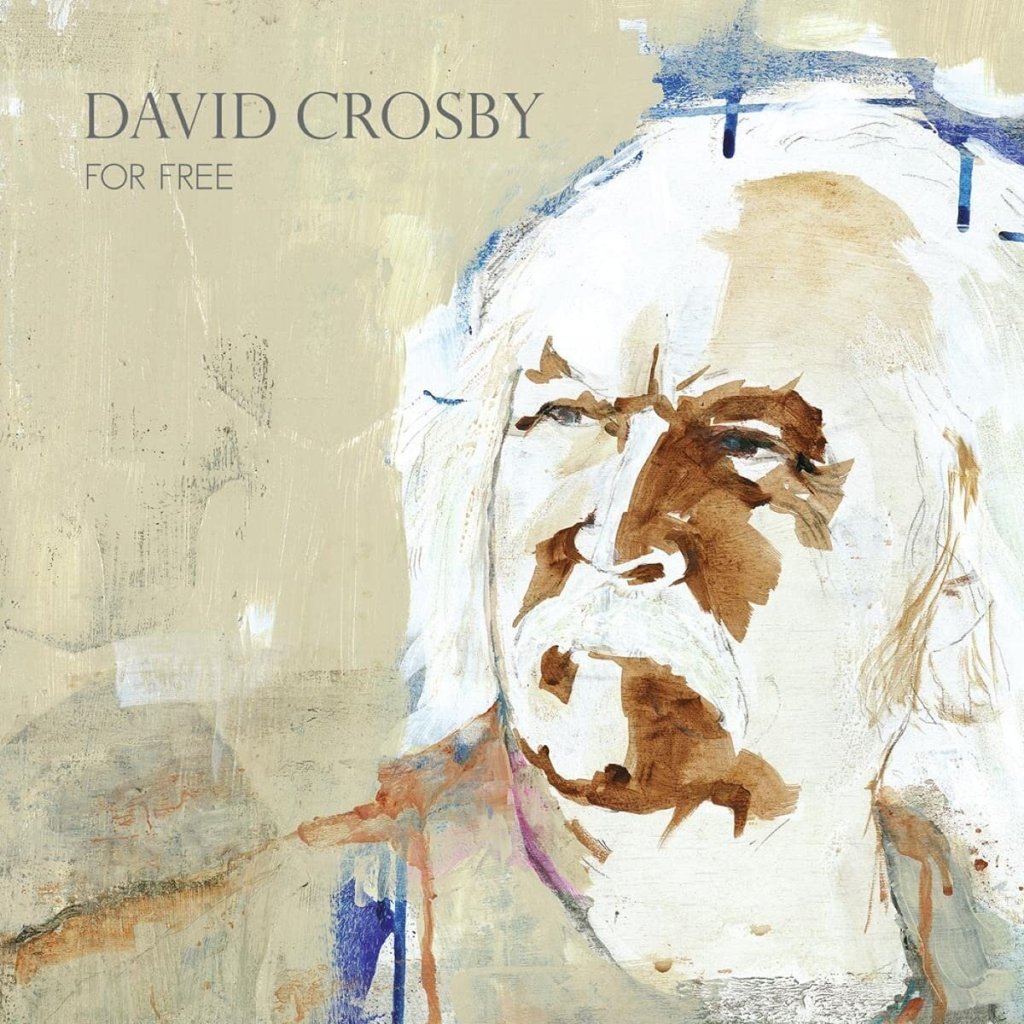
9. Moonspell – Hermitage
They topped my 2014 list with Extinct, an album I consider as immaculate as anything ever recorded. Hermitage is another quality album by my favourite Portuguese outfit. The atmospherics aren’t as dramatic as those on Extinct, the production’s not as crisp, and the music is a lot less gothy. Extinct had a distinct Type O Negative influence. The two bands toured together and were good friends, so it’s natural that some stylistic bleedover would happen. Not that Moonspell were ever emulating TON – the influence was subtle but it was there. I don’t hear any Type O influence on Hermitage, though. This record delves more into Opeth territory, exploring the land of heavy progressive metal. This gives Moonspell the chance to stretch themselves musically and express their artistic vision in new ways. But Hermitage – musically adept as it is – doesn’t set my excitement on fire the way Extinct does. When Extinct first came out I listened to it continually for months. It was by far my most listened-to album of that year. Hermitage is different. It doesn’t captivate me but I can appreciate its artistry and deeply enjoy it. There are some gorgeous moments: sublime guitar work, particularly. Pink Floydy in parts. More evidence of prog leanings. It’s an introspective piece of art. That’s the main difference between Hermitage and Extinct. Extinct was a roaring catharsis of an album. Hermitage is more inwards-looking, more solitary, true to its title.
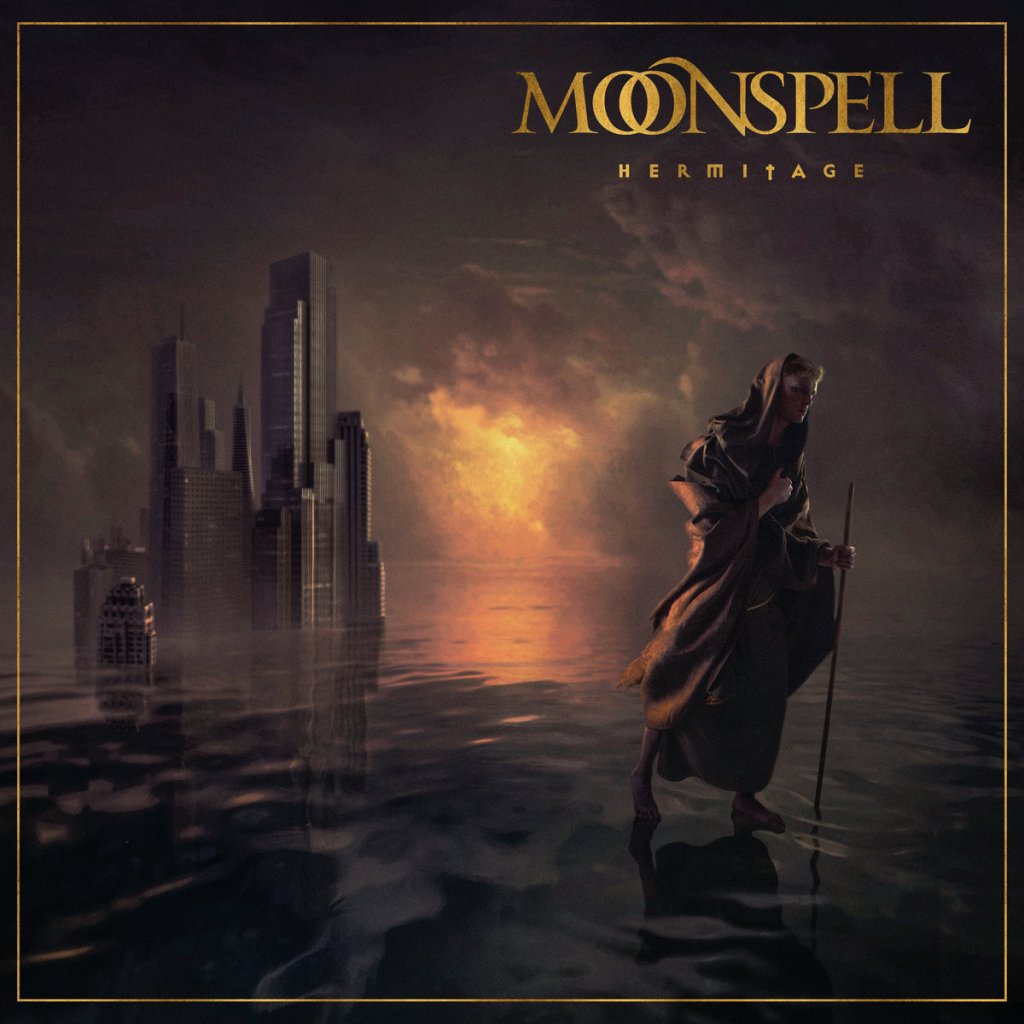
10. Mike Tramp – Everything Is Alright
I like Mike. White Lion played their part in my adolescence. Their tunes are still special to me. Mike’s subsequent project Freak of Nature delivered heavier music that was hugely underrated, but the folk who got it really got it. Since then, as a solo artist, Mike’s music has been consistently strong, never more so than on 2021’s Everything Is Alright. For me the album’s highpoint is Trust in Yourself, an emotive song that shuns the moronic herd mentality prevalent today. That track is very much the spiritual and musical successor to White Lion’s Living on the Edge, in which Mike sings about packing his bags and riding into the sunset, not knowing where he would go but not being even the slightest bit worried about that. Shades of Freak of Nature’s Open Space too. Perfect songs, all.
Mike continues fearlessly on, free as a bird, creating music from the heart, guided by his own inner compass. There aren’t many like him. The album has some exhilarating moments. That unique voice is instantly recognisable, dripping with emotion and truth, singing meticulously crafted lyrics. Mikey’s the real deal. Always has been.

11. Fear Factory – Aggression Continuum
One of my all-time favourite bands. I played Soul of a New Machine, Demanufacture and Obsolete relentlessly back when they came out. Likewise with the tour-de-force return to form Genexus in 2015. Fear Factory pioneered cyber metal. Taking electronic cues from Front Line Assembly, Gary Numan and Brad Fiedel, and philosophical themes from Terminator, FF combined these with precise industrial metal. And lo, cyber metal was born. Burton C. Bell’s soaring voice is perfect for this style of industrial machinistic music. His tones are irrepressible, loaded with hope and a refusal to submit. He can roar but his voice can also soar, and that’s when it’s most effective. Aggression Continuum is – like Ministry’s Moral Hygiene and a lot of the savvy art of the past couple of years – a work of enlightened, angry social commentary. Whereas Ministry’s album is raw and visceral, Fear Factory’s is polished shinier than a T2 robot. It’s the sound fans have come to expect from the band – the Fear Factory blueprint. As usual, there are tips o’ the hat to Brad Fiedel’s amazing soundtrack work from the Terminator films – a leitmotif that carries across several Fear Factory albums. It works. Sometimes the band forgets about melody and veers into all-out noise. That’s a necessary part of their craft, but I prefer when they blend melody and heaviness. When Burt uses clean vocals and lets his voice soar, that’s when Fear Factory’s music has maximum impact. That’s when it takes the listener on a journey. Aggression Continuum isn’t my favourite Fear Factory album but it is – in parts – stunning. A welcome addition to the band’s groundbreaking discography.

12. Swallow the Sun – Moonflowers
One of my friends – a fellow Swallow the Sun fan – can’t get into this album at all. He finds it too introspective, the songs too dirgelike. (That same friend summed up the recent Alan Parsons live album as sounding “similar to a bunch of old goats bleating in a barn” – a description that had me crying with laughter… and I’m an Alan Parsons fan!) Back to Moonflowers, though. It’s not a happy smiley album. No Finnish melodic death metal is. But of all the bands in that movement, Swallow the Sun has always been the most grief-laden and funereal (thematically they’re like a Finnish incarnation of Halifax doomsters My Dying Bride). Some of their songs are tributes to fallen loved ones – mythic laments awash with delicacy and emotion. There’s a huge Dark Tranquillity influence (always a good thing) on Moonflowers, particularly in the vocals. Most of the tracks start out with soft intros featuring guitar work that sounds a lot like Steve Rothery’s (another good thing). Some songs remain restrained throughout. Others grow heavier, exploring the full spectrum of the melodeath sound. This album is an ideal accompaniment to reflection, meditation, remembrance and grief. It heightens those experiences. The track Woven into Sorrow is the spiritual successor to Queensrÿche’s Silent Lucidity. Epic in sound and scale.
A monumental album by a monumental band.

13. Tomahawk – Tonic Immobility
Another Mike Patton project. Tonic Immobility is the first Tomahawk record in eight years. Musically, the album reminds me a lot of of Faith No More’s King for a Day, Fool for a Lifetime, which makes sense in one respect but is strange in another. It’s logical that these two albums might sound alike, as Mike Patton sings on both and is involved in song composition too. The likeness is chronologically strange, though, in this sense: King for a Day, Fool for a Lifetime came out in 1995, then four years later Patton formed Tomahawk, yet the early Tomahawk material doesn’t sound much like FNM at all. Not to my ears, anyway. But Tonic Immobility is essentially King for a Day, Fool for a Lifetime Part 2. There are the same jagged riffs, vocal delivery and dense production. Admittedly, the track Business Casual harkens back to slightly earlier FNM, sounding like Kindergarten from the 1992 album Angel Dust. All of which is good. I’m always happy to hear Mikey’s musical output, from his myriad obscure projects to his “supergroup” Tomahawk, his “side band” Mr Bungle, and his “main band” Faith No More.
A little piece of trivia. Mike Patton has a six-octave vocal range – the largest in all of rock or metal music. I’ve always loved the way he can flit between deep, menacing growls and glass-shattering shrieks. I think I know how he achieves this. When I was a kid, one of my metal-loving friends and I were sitting listening to music in my room one afternoon. I asked my friend how he thought vocalists such as Rob Halford, Ian Gillan, Bruce Dickinson, King Diamond and Eric Adams were able to hit stratospheric high notes with apparent ease. My friend pondered this for a moment and then replied, “They must be squeezin’ their baws. I mean, it isnae natural for a man tae sing that high. No’ unless someone’s squeezin’ has baws.” There was definite logic in what he said. So I put his theory to the test. I selected a song with a super-high vocal scream – Jag Panzer’s Harder Than Steel – and played the track at considerable volume, singing along with gusto. 26 seconds in – just as Harry Conklin’s voice soars into the upper register – I grabbed my balls and squeezed hard. I hit some really high notes. Not the right high notes, but high notes nonetheless.

14. Dark the Suns – Suru Raivosi Sydämeni Pimeydessä
Suru Raivosi Sydämeni Pimeydessä – easy for you to say! Those words are of course Finnish for “buy this album or we’ll kick you in the genitals”. Not really. It’s actually Finnish for “my grief raged in the darkness of my heart”. Which is a much better title, admittedly, than one about booting people in the nether regions.
Like previous Dark the Suns releases, this album is melodic death metal of the original Finnish variety, in the same vein as the titans of the genre: Insomnium, Amorphis, Omnium Gatherum, Wintersun, Swallow the Sun. Certain sections sound a bit like Mors Principium Est… and there’s nothing wrong with that. Vocals alternate between guttural roars and clean-toned singing – a technique pioneered by Insomnium’s Niilo. Done well (as they are here), this vocal duality is effective. It brings balance to the heaviness, light to the darkness, and emotional impact to the atmospherics.

15. Gojira – Fortitude
A hugely enjoyable chunk of heavy groove metal. For the first time on a Gojira record, the riffage features an unmistakable Pantera influence. Not just here or there but throughout most of the album. There are those trademark bouncy, groovy riffs and even the squealies (pinch harmonics, if you want to be all music theory about it) that Darrell used to amazing effect in Pantera’s music. In terms of Gojira 2021 vocals, they sound a lot like Killing Joke’s Jaz Coleman, to the extent that some parts of this record could be straight off KJ’s 2015 release Pylon (my equal-top album of that year). Gojira’s rhythm section, on the other hand, has a distinct tribal sound reminiscent of Sepultura’s circa Roots. No bad thing. But Fortitude isn’t just a cobbled-together bunch of influences. Sonically the album stands very firmly on the shoulders of giants (most notably Pantera, Killing Joke and Max Cavalera-era Sepultura), but it features song structures with true originality, even though they’re delivered using techniques that have been heard before. This band has never been about breaking new ground for the sake of it, though. They’ve always been about the groove, the songs, the flow, the totality of the sonic elements. Fortitude is a supremely listenable record, from start to finish.

16. Helloween – Helloween
Self-titled albums annoy me. Not musically but through their titles. How lazy is it to just fling out an album with the same name as the band? Smacks of can’t-be-arsedness. Imagine the flak I’d get if I released a book called Mark Rice! And rightly so. Pushing aside nomenclaturial gripes, though, let’s focus on the music. Helloween has been one of my favourite bands since they kicked off, back when I was a metal kid with hair like an untended hedge. Their Keeper of the Seven Keys, Part I album was a life-changer for me. The first time I heard Future World I thought I was going to explode with awe. I played it over and over, going berserk, amazed by the Iron-Maiden-on-speed staccato riffing, and the stratospheric vocals of Michael Kiske. Since then the band has been through a few lineup changes but the quality of their material has never seriously dipped. I don’t think they’ve ever matched Keeper of the Seven Keys, Part I – that album was a slice of magic: a unique occurrence that resulted from many outside factors aligning perfectly while band members felt simultaneously inspired and able to work together in harmony, without “creative differences” or bickering.
Helloween’s 2021 LP showcases this band’s talent. Masters of their craft. They make it sound easy.

17. Ken Hensley – My Book of Answers
The word legend is much overused these days. Some moron posts a 10-second video of himself doing something inane, and within days millions of other morons are hailing him as a legend. They have no clue. Ken Hensley was a legend. In fact, Ken Hensley was a LEGEND. Capitals, italics and bold font are required to stress the magnitude of his talent. I hate using the word “was” with regards to Ken. I miss him. He was, is and always will be a legend. There. That feels better.
As a kid I became familiar with Ken Hensley’s talent when I found the music of an absolute one-of-a-kind band called Uriah Heep. Like Jon Lord in Deep Purple, Ken Hensley was able to make the keyboards in Uriah Heep an integral part of the band’s sound – not a frilly extra as is usually the case in rock. Hensley’s keyboards were a driving force, pushing the music forwards, like a wave for the other instruments and vocals to ride on. Quite something to hear.
Hensley wasn’t just a keyboard player, though. He was a prolific composer, multi-instrumentalist and an amazing singer too. I love his body of work with Uriah Heep, I love the new dimension he brought into Blackfoot’s music during his time with them, and I love his solo albums. My Book of Answers resulted from a chance serendipitous meeting between Hensley and Russian poet Vladimir Emelin, a huge fan of Ken’s music. Emelin spotted Ken at an airport in Spain, recognised him, approached, introduced himself, and the two started chatting. They soon realised they were kindred spirits. An idea for a collaboration began percolating. That idea bore fruit: My Book of Answers. Emelin’s poetic words suit Hensley’s musical compositions perfectly. One thing really surprised me about this record: Hensley’s voice. For most of the album he sounds like Blue Öyster Cult’s Eric Bloom. The two voices have the same sort of resonance. That word yet again.
I’m certain there’s enough unreleased Ken Hensley material to fill at least a 10-LP box set, so this record may not be the last thing we hear from him. But who knows if or when that other material will see the light of day? In the meantime, I’ll continue enjoying this record as the beautiful swan song it is.
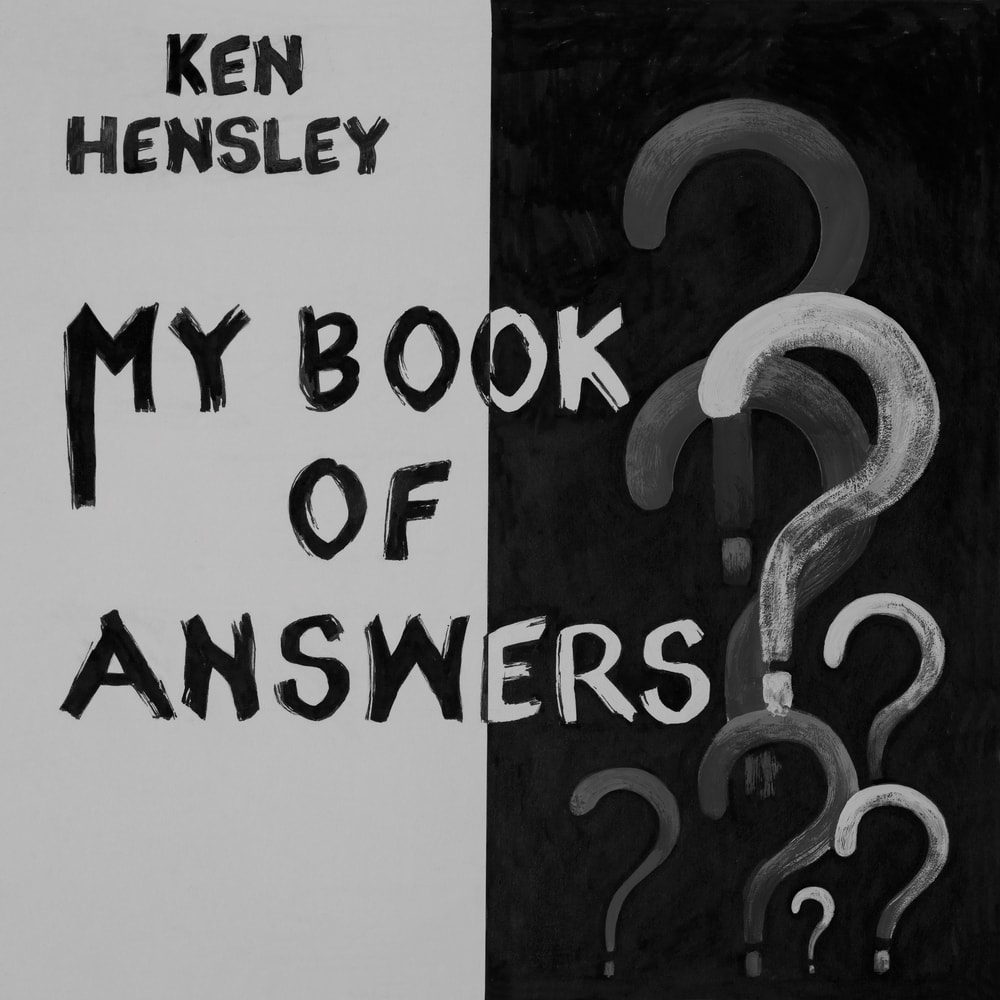
18. Thor – Alliance
Ever since hearing Let the Blood Run Red on Tommy Vance’s Friday Rock Show as a kid (and buying the single on blood-red 12″ vinyl in my local record shop the next day), I’ve been a fan of Thor. The force of his music has never dimmed. The themes of his songs haven’t changed either. Jon-Mikl Thor is an old-school heavy-metal stalwart whose tunes explore the archetypal themes of mythology, strength, perseverance, loyalty to tribe, annihilating villains, and never taking any shit from anyone. Jon-Mikl Thor’s offstage persona isn’t much different from his onstage one. He’s metal to the core, all the time. Alliance is another epic addition to the Thor discography. A glorious slab of anthemic metal.

19. Katatonia – Mnemosynean
A comprehensive collection of rarities and B-sides, Mnemosynean is an eclectic listen. Because it covers the 30 years of Katatonia’s existence, this record allows the listener to hear the evolution of the band’s sound. Some of the earlier material sounds almost indistinguishable from The Sisters of Mercy – the heavy goth influence and Eldritch singing style is there. As the band members matured, so did their music, which took a progressive path, lightening for the most part but still dishing out wall-trembling riffage on occasion. I got the double-CD expanded edition of this album. So many songs, so much pleasure and melancholy. Jonas Renske’s voice (his true voice which he he sings with now, not his Eldritch-clone goth voice of the distant past) is astonishing. It’s at once relaxing, evocative and loaded with melancholy. A voice that can break your heart and fix it at the same time.
Amongst the tracks on this album is a cover version of Judas Priest’s stunning Night Comes Down. The sleeve art of Mnemosynean is also a tip o’ the hat to Priest: it’s a sort of Nordic mirror image of Judas Priest’s Screaming for Vengeance artwork. Priest’s classic front cover features a giant robot warbird known as the Hellion screeching diagonally earthwards – wings up – against the backdrop of a crimson sun surrounded by yellow sky, with the album-title lettering in the slipstream. Katatonia’s cover art shows a raven rising diagonally – wings down – against the backdrop of a grey sun and a slightly less-grey sky, with the album-title lettering in the slipstream. The moment I saw the Katatonia cover art I knew it was a tribute to Priest’s. Respect indeed.

20. Timecop1983 – Faded Touch
I went on at length about most of the releases above, so this time I’ll keep it brief for a change. Faded Touch is sublime synthwave. It’s upbeat, uplifting, inspiring and dreamy. The sort of music that’ll have you tapping your foot to the beat whilst smiling in stunned awe at what you’re hearing. Play it through big speakers, sit in the sweet spot between them, and you’ll actually feel the frequencies pulsing in your body. I recommend that. It’s an enjoyable tune-up. There’s a big Vangelis influence and an equally strong Tangerine Dream one. When it comes to synth-based music, that sort of provenance is about as good as it gets. Some scorching guitar solos on this album, too – those came as a welcome surprise.
I put the Timecop1983 track On the Run (from previous album Night Drive) onto a compilation CD I made for the car. The wolfchild loves that tune as much as I do. Whenever he hears it, his default expression turns into a lupine grin and he looks at me as if to say, ‘That is phenomenal!‘ As you may already know (and if you don’t you’re about to find out), wolves are not just excellent judges of character, they also have impeccable musical taste.

A couple of my favourite bands – The Skids and Saxon – released albums of cover versions in 2021. I never include covers albums, tribute albums, greatest-hits compilations, best-of collections or live albums in my year lists. Only newly released original material is included, although it isn’t always newly recorded – sometimes it has been lying around in a studio for decades, such as box sets I got by Jimi Hendrix, Alex Harvey, and Lynyrd Skynrd (individually, not jamming together – although that would have been something to hear!). That rationale is why Katatonia’s Mnemosynean – an extensive collection of rarities and B-sides – made it onto my 2021 list, but covers albums by Saxon and The Skids didn’t. In terms of musical calibre, those covers records are strong enough to be included in the year list, but they’re not original songs – that’s why they’re not on the list. The Skids and Saxon never release less-than-impressive music. I’ve been listening to Saxon since I was ten, but I was listening to The Skids even before that, back when I was practically a baby. My elder brother was a huge punk fan and used to buy every 7″ vinyl single by Sex Pistols, X-Ray Spex, The Rezillos, and – of course – Dunfermline’s finest, The Skids. I soaked up those sounds as a child. Loved them. Bounced around to them. Those tunes accompanied me through highs and lows, enhancing my joys and lightening my sorrows. I’ve been lucky enough to meet and spend time with both Saxon and The Skids, the former as a result of their inclusion in my novel Metallic Dreams – an adventure they were only too happy to be part of. In 2018 I spent a weekend with The Skids in their home town of Dunfermline, just three months after the death of my mum. While I was chatting with singer Richard Jobson, he said, “You’ve been listening to our music for so long now – since you were a kid barely out of nappies – you’re more than a fan. You’re a friend.” A surreal, life-affirming moment.
Some folk say you should never meet your idols, as you’ll only be let down by the result. I reckon it’s unhealthy to perceive anyone as an idol but it’s healthy to admire artists whose work resonates with you. And when particular art – be it music, literature, poetry or visual art – really resonates with you there’s an overwhelming likelihood its creator(s) will too. After all, the art came from them. Whenever I’ve met the creators of music that affects me on the deepest level, they have always resonated with me.
I urge you to check out the 2021 covers albums by The Skids and Saxon. You’ll hear a diverse array of classic tunes played like never before. Pump The Skids’ rendition of Ace Frehley’s New York Groove through big speakers. It won’t just blow away the cobwebs – it’ll blow your mind (and maybe your speakers too). And The Skids’ cover of David Essex’s Rock On is immaculate, starting out as a heavy-yet-faithful rendition of the original, then Jobson goes all spoken word and tells an immersive story of ’70s Fife life, when – in Dunfermline’s Kinema ballroom on DJ nights – the song Rock On was the cue for the most feared local gang, the AV Toy, to kick off a spree of violence; that track became the soundtrack to the AV Toy’s bloodthirsty bonanzas. Years later Jobson told David Essex that Rock On had been a notorious gang song in the east of Scotland. Essex was surprised yet said he could understand how that track might become a gang’s chosen fight song, as the music has “a seething underbelly” to it. David Essex’s original is an example of sonic restraint and understatement. The Skids’ version is a wild beast unleashed.
It’s worth mentioning that Enuff Z’Nuff also released a covers album in 2021. It contains only Beatles covers. The Beatles’ influence on Enuff Z’Nuff’s music has always been easy to hear, so it made sense that one day Chip and the lads would do a full album of Beatles covers. I’d rather have had a new studio album from EZ’N, but one of those will probably appear soon. A few years ago I was lucky enough to meet Chip Z’Nuff in Bannerman’s Bar in Edinburgh after an Enuff Z’Nuff show there. My friend Bruce – aka vocalist Thunderfuck from The Deadly Romantics – has been friends with Chip for decades. After Bruce introduced us at Bannerman’s, Chip and I had a good chat about music, writing, art and all that good creative stuff. I’m happy to report that Chip is just as friendly, upbeat and adorable in real life as his starry-eyed onstage persona implies. Peace and love personified.
In addition to all the releases mentioned above, there was an abundance of other new music that impressed me in 2021. You’ve read my top 20 list (which contains 28 items, breaking the “laws” of arithmetic) and my thoughts on 3 excellent covers albums. It would seem wrong to not mention the other artists whose new sounds enriched (and continue to enrich) my existence. So I offer love and thanks to Diana Ross, Wolfchant, Accept, Styx, Trivium, Tragedy (the second-gayest metal band on the planet, after Pink Stëël), Perturbator, Exodus, Night Ranger, Vangelis, Рожь, Ghost Bath, Devin Townsend, Jim Peterik and World Stage, Enslaved, Smith-Kotzen, Electric Boys, Sol Sistere, Скверна линия, Cân Bardd, Arde, Mostly Autumn, Bonfire, Thundermother (not the ’60s UK proggers but the 21st Century hairy sweaty heavy-metal burds from Sweden… not that there’s anything wrong with that – some of my most enjoyable experiences have been with hairy sweaty heavy-metal burds from somewhere or other), Rob Zombie, Ozric Tentacles, A Pale Horse Named Death, Marty Friedman, Paul Gilbert, Skold, Michael Schenker Group, Fenris Vrede, Colotyphus, Folkrim, Gloosh, Einherjer, Blackmore’s Night, Alda, Yes, Tiesto, Kemerov, Fugit, Wolves in the Throne Room, Medwyn Goodall, Robert Plant and Alison Krauss, Olhava, HammerFall, Korpiklaani, Lindemann, Vouna, Eternal Valley, Kalmankataja, A Sea of Dead Trees, Jean-Michel Jarre, KK’s Priest, Aephanamer, Toyah, Eard, Athemon, Billy Gibbons, Cheap Trick, Mitch Murder, Faithless, The Darkness, Steven Wilson, Lesbian Bed Death, Ars Magna Umbrae, The Mission, Billy Idol, Alice Cooper, The Stranglers, Aquilus, Kreationist, Olio Tahtien Takana, Panopticon, Unreqvited, Breath of Wind, Bodom After Midnight, The Dropkick Murphys, Ruadh, Stormtide, Windfaerer, Firienholt, Ethereal Shroud, Lucifer, Nemorous, Koto, Flotsam and Jetsam, Medenera, Limp Bizkit, Joel Hoekstra’s 13, Auri, Mammoth WVH (the new project of Eddie Van Halen’s son Wolfgang), Bellatrix, Iron Maiden, Cradle of Filth, Peter Goalby, Trevor Bolder, Lee Kerslake, and last but definitely not least, Lee Aaron (fwooooooaaaaaaaaar, etc. – sorry about that… the 12-year old me whose bedroom walls were plastered with posters of Ms Aaron took over for a moment).
As for the most epic work of metal fiction ever conceived – the sequel to Metallic Dreams – it’s nearly complete. More than twice as long as its predecessor – so big it’ll bend bookshelves – it’s an anarchic novel that doesn’t so much push the envelope as take a flamethrower to it. Readers who ask about the sequel’s progress have heard “it’s nearly finished” so many times I’m beginning to sound like the boy who cried wolf. That may be a good analogy, because in that story the wolf did come eventually. When the time was right. Just like this novel. It’s worth the wait, I promise. The ending is written and the cover art is done. Just a few more chapters need to be transposed from my mind onto the page. Then the book will be ready. Cometh the hour, cometh the story.
Until then I’ll be incommunicado, either writing immersed in music, or somewhere in the wilderness with the wolfchild.
If you haven’t read Metallic Dreams (and if you haven’t, why not… eh… EH?) now’s the time to do so. You’ll then be ready for the sequel. The remastered edition of Metallic Dreams (which I spent a full year creating in late 2018 and early 2019) is at a reduced price on Kindle worldwide until that sequel arrives. It’s available in paperback form too. Or if you want to go all flashy and splash out a bit, there’s a hardback edition of the remaster. I’ll post links below. Click the bloody pentalpha to be taken to the Kindle page. Click the molten gold candlewax pentalpha to go to the hardback page. One orthodox Greek priest who is renowned for his attacks on anything he considers “of the Devil” (his kung-fu attacks on ATM machines are infamous in Athens) saw a promo front cover of the Metallic Dreams Greek translation and immediately tore it to shreds. He then announced that if the book is released in Greece, he will decry everyone involved as heretics and will publicly burn the novel. So my Greek translator friend mailed a paperback copy of the Greek edition to the priest, who subsequently burned the book and declared me a heretic (this shouldn’t come as a surprise to many people). If I ever set foot in Greece, there could be a Mortal Kombat-style battle between the kung-fu priest and me, Muay Thai Markie. You can’t buy that sort of book publicity.
As an extra gift (don’t say I’m not good to you), I’ve posted a short video (2 minutes 24 seconds) of in-car karaoke featuring the wolfchild dancing and me “singing” along to the the equal-greatest song of all time (which we’ve already established is I Could Be So Good for You by Dennis Waterman). There’s also a short burst of CW McCall’s Convoy (from the film of the same name) after that. I’ve embedded a link to the video on this page. Scroll down to beneath the Metallic Dreams covers and you’ll see it. I recommend choosing 1080p as video quality – don’t accept the default ‘Auto’ setting. Best seen in its true resolution and viewed full screen. And please feel free to sing/howl along.


